#Cathedral of Syracuse
Explore tagged Tumblr posts
Text
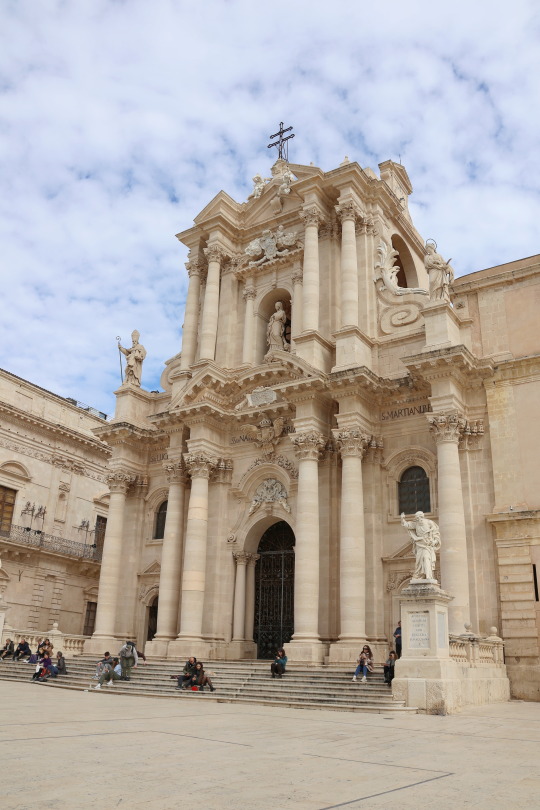


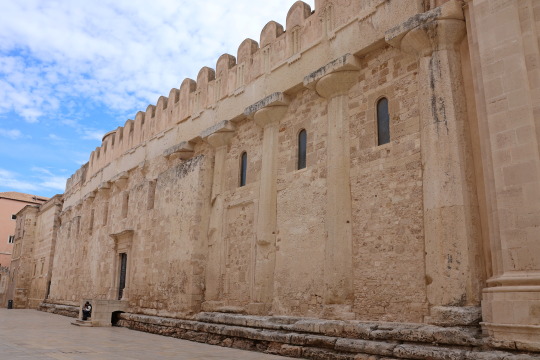
The Duomo of Syracuse started its long life as the Temple of Athena in the 5th century BCE. The conversion to Christian church seemed to have happened in the 7th century CE. The Doric columns of the original Greek temple were incorporated in place into the "new" church. This church was then converted into a mosque in 878 during the Arab conquests and then a church again in 1058. The roof of the nave and the mosaics were placed during the Norman years. Much of the exterior of the church was rebuilt after the Great Sicilian Earthquake of 1693
Syracuse, Sicily
Dec. 2019
#syracuse#siracusa#sicily#ancient architecture#duomo#cathedral#italia#italy#sicilia#travel#original photography#photographers on tumblr#photography#architecture#historical architecture#church architecture#ancient temple#ancient greek#magna grecia#archaeology#lensblr#wanderingjana
26 notes
·
View notes
Text


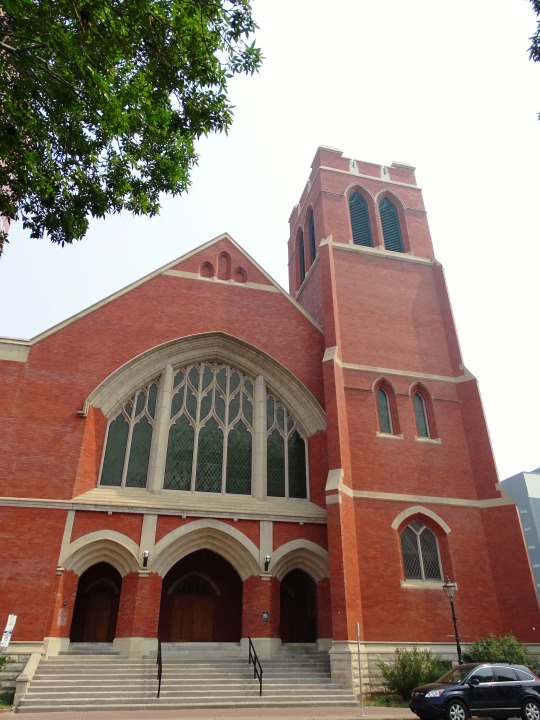

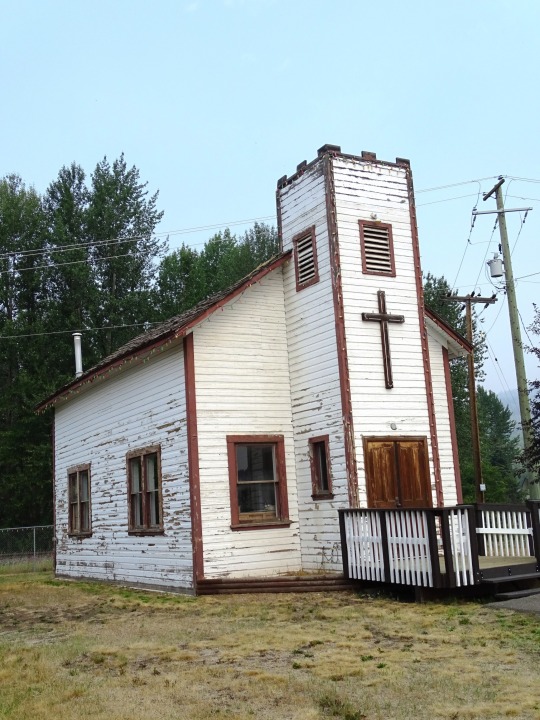

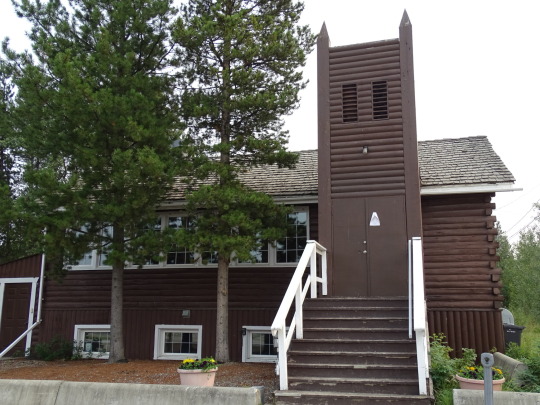


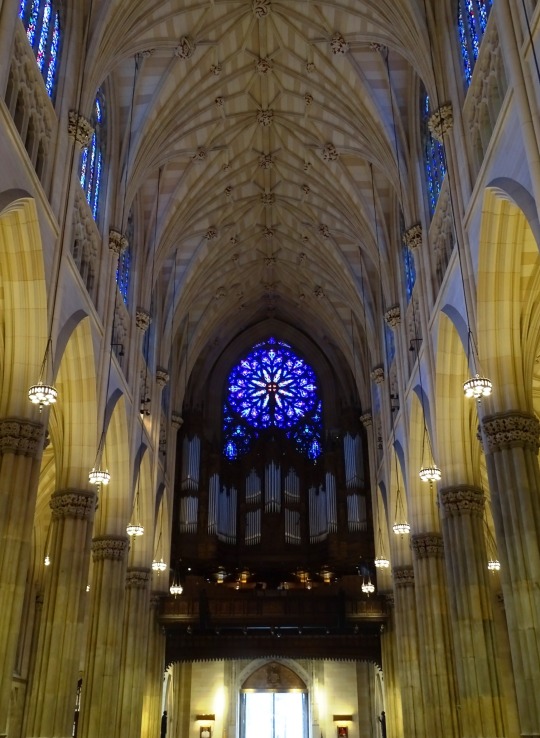
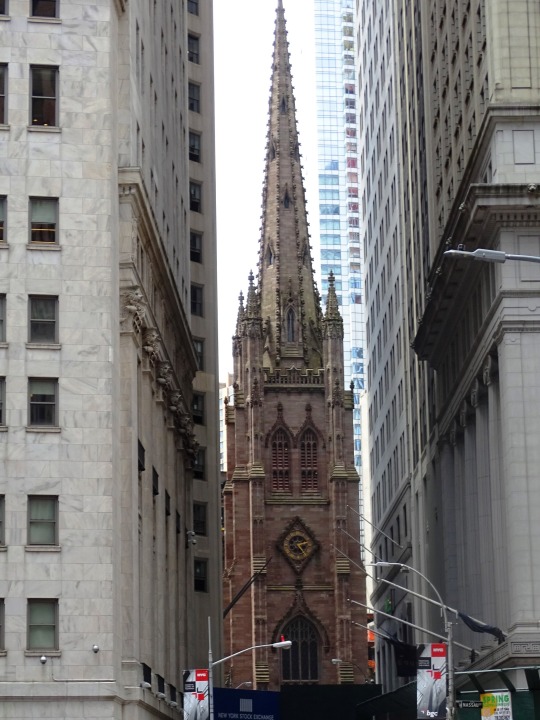

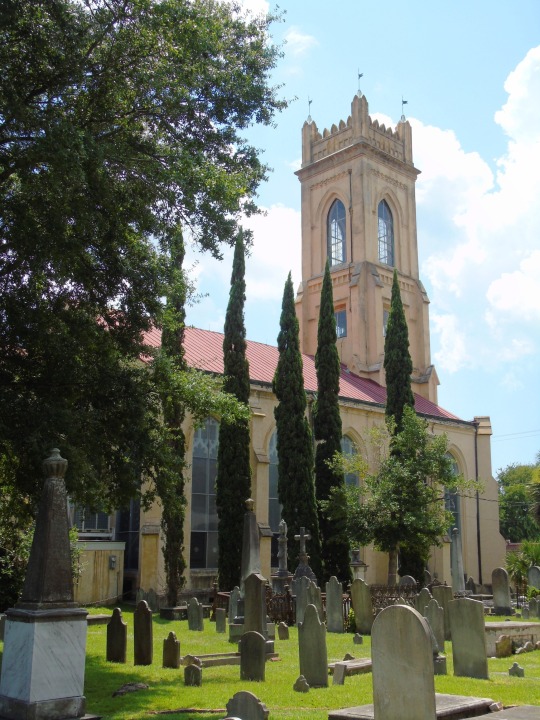


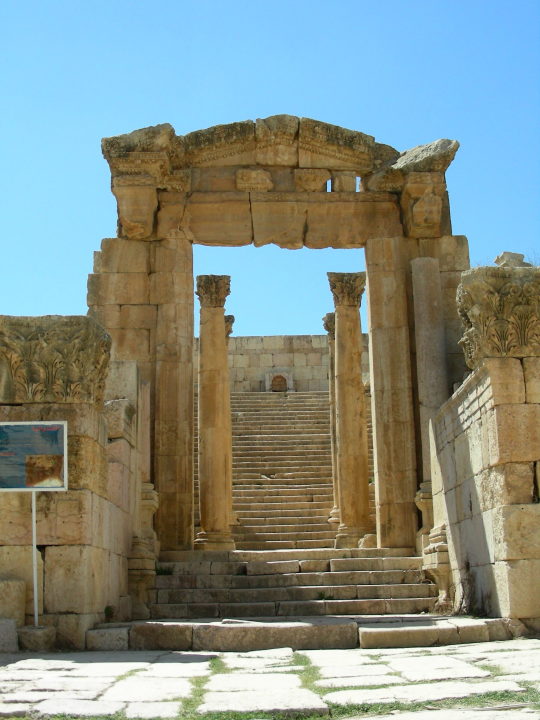



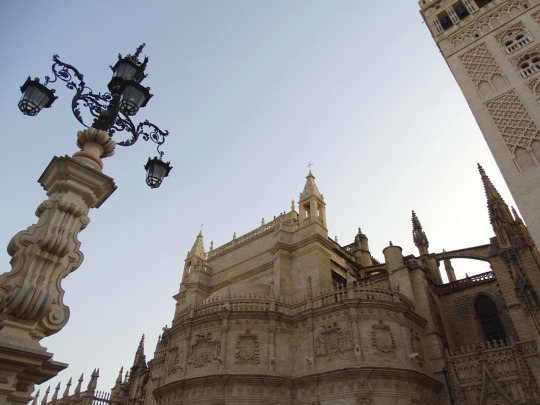

World Religion Day
World Religion Day is celebrated on the third Sunday in January every year, and is a reminder of the need for harmony and understanding between religions and faith systems. On this day, communities of different faiths have the opportunity to get together and listen to each other, as well as celebrate the differences and commonalities that the delicate intermingling of culture and religion brings. There are approximately 4,200 religions around the world. While many people live their lives without religion, faith in a higher being or power works for the majority of people. Whatever the reasons, we are all for the idea of people being unified despite differences, and celebrating them.
History of World Religion Day
The first official observance of World Religion Day (as it is known today), was in 1950, but the concept began a few years prior to that. In Portland, Maine, the National Spiritual Assembly of the Bahá’í Faith hosted a talk in Eastland Park Hotel in October 1947, culminating in the decision to observe an annual event, then known as World Peace Through World Religion. By 1949, the event began to be observed in other parts of the U.S. and grew more popular. By 1950, it came to be known as World Religion Day. On this day, at various different locations, many authors, educators, and philosophers are invited to speak on world religions and the importance of establishing and maintaining harmony between them. It’s a great forum for learning more about other religions and cultures too, and a chance to intermingle socially with people of different faiths and worldviews.
Since this concept was the brainchild of people from the Bahá’í Faith, it is worth exploring what this faith is and tracing its historical roots. As a religion, Bahá’í first emerged in Persia (modern-day Iran), in the 1800s. There are three core principles of this faith — unity of God, unity of religion, and unity of all mankind. It is a monotheistic faith, believing in a single god, and that the spiritual aspects of all religions in this world stem from this single god. Another central tenet is the belief in the innate equality of all human beings. Thus, all humans have the same rights and responsibilities. If you look at it, the Bahá’í Faith is an all-encompassing one that recognizes the commonalities between all religions, so Baháʼí believes that all faiths have common spiritual goals too, especially since religions are ever-evolving.
World Religion Day timeline
1800s The Baha`i Faith is Established
In Persia, around 1844, the Bahá'í Faith is established by a mix of people from Christian, Jewish, and Zoroastrian religious roots.
1949 World Peace Through World Religion
The first event takes place in Portland, Maine, to establish the foundation of World Religion Day.
1950 World Religion Day is First Observed
As World Peace Through World Religion begins to spread across the U.S., the celebration morphs into World Religion Day.
1957 Bahá'í Leadership Passes on to a Group
Rather than passing on from individual to individual, the death of Shoghi Effendi leads to the faith leadership passing to the Universal House of Justice.
World Religion Day FAQs
How many religions are there in the world?
Many scholars estimate that there are approximately 4,200 different active religions in the world today.
How many countries celebrate World Religion Day?
World Religion Day is currently celebrated in over 80 countries around the globe.
Which religion has the most adherents?
Christianity tops the list, with a whopping 2,3 billion. Next comes Islam with 1,8 billion. Third on the list are those unaffiliated with any particular religion, at 1,2 billion.
How to Observe World Religion Day
Attend an interfaith event
Engage with other religions
Try out a different religious experience
Many different organizations hold interfaith events on this day, where people can get together and hear about the beliefs and philosophies held by others of different faiths. These events are great spaces for eminent speakers, writers, and spiritual leaders to share openly about what they subscribe to, and why.
World Religion Day provides the perfect opportunity for people to step out of their individual bubbles and engage with the beliefs and spiritual ideologies of others. It’s about dialogue and the freedom to both express and listen; most importantly, it’s a time to learn from each other. This day reminds us that religion does not have to be a taboo subject, and everyone has a unique story to tell.
Religion is often inextricably linked with culture, so why not experience the best of both by attending a religious event of some sort, outside of your own? Whether it is going to a mosque or temple, or celebrating a religious festival you are not familiar with, it’s a great way to make inroads into different community groups and build relationships.
5 Facts About World Religions You May Not Know
You name it, there’s a patron saint for it
Wicca is not an ancient religion
Mormons have limited beverage options
The “Qur’an” mentions Jesus more than Muhammad
Hindus can also be atheists
In Catholicism, there is a patron saint for nearly everything, including coffee, beekeepers, and headaches.
Though it sounds like it would be ancient, considering its roots in European fertility cults, Wicca was introduced in the 1950s.
Mormons are forbidden from drinking beverages like tea, coffee, or alcohol; soda, however, seems to be okay.
Though this is not a popularity contest, the “Qur’an” apparently mentions Jesus Christ five times more than Muhammad.
While Hinduism is a polytheistic religion, it is also possible to be a practicing Hindu and an atheist — the moral and ethical code remains the same.
Why World Religion Day is Important
It purports to unite people
Interfaith harmony
A chance to experience something different
We love any day that seeks to bring people together, irrespective of differences, and this day fits the bill exactly. Whatever one’s religious beliefs and culture, the longing for acceptance and unity will be a fundamentally human one that unites us already.
World Religion Day offers people across the globe a chance to get to know others of different religions better, and seeks to foster a better understanding of religious differences through peaceful means such as dialogue.
The various interfaith and religious events organized by communities around the world are an exciting opportunity and opening for people to immerse themselves in spiritual experiences different from what they know. And so much of it is cultural that we see it as a win-win.
Source
#First Presbyterian Church by Wilson and Herrald#Edmonton#Idaho Falls#Calgary#Chinese United Church#Historic Anglican Church of St. Clement#Cathedral of Our Lady of the Holy Rosary#Seville Cathedral#Salt Lake Temple#Spain#Sweden#USA#original photography#architecture#cityscape#tourist attraction#landmark#Miami Beach#Temple Adath Yeshurun#Saint George Tropoforos Hellenic Orthodox Church#Syracuse#New York City#St. Patrick's Cathedral#Notre-Dame Basilica of Montréal#World Religion Day#19 January 2025#third Sunday in January#Basilica of Saints Peter and Paul#Canada
2 notes
·
View notes
Note
hii!¡!¡ am so happy you wanna share more ab your better cr !¡
i was more curious ab your girl trip :)) ITALY TRIPS SOUND SO FUN ?!
girls trip to sicily, italy

.
.
.
i'm not sure if you've caught on yet, but i'm indian. and as most indian daughters (as well as being the first born) i had a pretty sheltered and, somewhat, overprotected childhood. thankfully, with age came maturity and with that came trust from my parents and the annual girls' trips began the year i turned 18 !!
in 2025, my girlfriends and i (there's four of us) plan a week long trip to the island of sicily in southern italy —
our first stop will be at avola for four days. straight off the plane, we plan to drive down from the regional airport near syracuse to get to avola and reach our airbnb, and then it's just about four days straight of beaches, shopping and relaxing (safe for our one stop for sightseeing at the Chiesa Madre San Nicoló because of course i'd stop by a cathedral, i'm nothing if not the standard textbook cut out of the thought daughter, head between aged papers, questioning everything between the sky and the soil, and doesn't religious imagery just pair so perfectly with that?) anyway..
after that, we venture back up to ortygia for the rest of the week. after multiple days of lounging around, lazing between beach chairs and bedsheets, we’d all be bumping around the house with energy that needs an outlet. and the perfect solution is to go out each and every day for the rest of our trip and explore the wonders of ortygia. overall we plan to go to five prominent places :
the syracuse cathedral aka il Duomo — again . religious imagery goes crazy, especially bcs one of my oc's is someone who battles with it throughout her story and you bet i will use the setting and surroundings and historical stories to inspire me and my writing (bcs yes, even in my better cr, i'm a fanfic writer 😌) and you cannot keep me and my girlies away from that place, okay? it was built on the bones of an old greek temple of Athena??? ofcs we're going
Galleria regionale di Palazzo Bellomo di Siracusa — two of my girlfriends are avid artists and they would really want to see this !! plus, the grounds of this gallery look beautiful as well like i just know i'm gonna get the best pictures >.<
Museo Naturalistico Siracusa-Wunderkammer — I REALLY CAN'T WAIT FOR THIS ONE !!!! there's is something so inherently and unashamedly me?? about the entire concept of this museum i mean; it is a ❝ 'cabinet of curiosities,' showcasing a collection of natural history objects alongside art and artifacts from various periods ❞ and apparently ❝ The museum embraces the concept of "horror vacui," or "fear of empty spaces," filling the space with a rich array of objects and art ❞ .. i mean COME ON ??!!! it is the perfect stop for the chaotic academic neat but messy hoarder maximalist in me
Tempio di Apollo (Apollonion) — THE TEMPLE OF APOLLO !!! there's really not a lot to say about this i mean, it's another temple ruin of a greek god, ofcs we'd go and it leads perfectly into the final destination ...
Giardino di Apollo — my absolute favourite location by far, by a long shot, cannot be beat, bcs LOOK AT IT (just look it up it's worth it i promise). it's so green and lush and the statues and art that's interspersed between the flora ?? my god i cannot wait to take photos, if it wasn't for the unlimited storage that i scripted, i'd be fucked
.
.
.
there's so much more i could talk about when it comes to this trip, i have other posts planned !! i was gonna put it all on here but it would get way too long T^T anyway ! look forward to a post about the quiet moments i have to myself in italy, the night time adventures and the FOOD ???
cuppa queries; order in — ask responses

2025 © chaaistained
#by chaaistained#teacup anons !!#better cr#better cr dr#desired reality#reality shifting#shifting realities#shiftblr#shifting script#shifting ideas#loa#loablr#loassumption#law of assumption#manifestation#manifesting
65 notes
·
View notes
Text
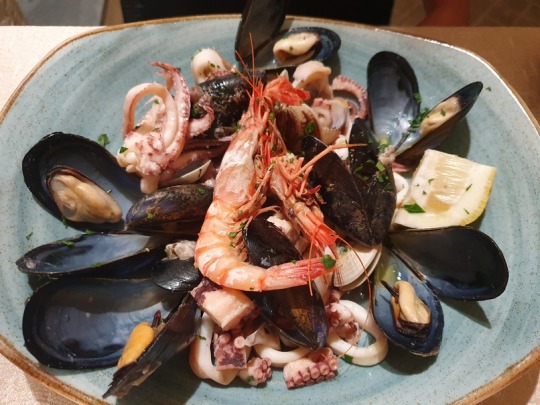
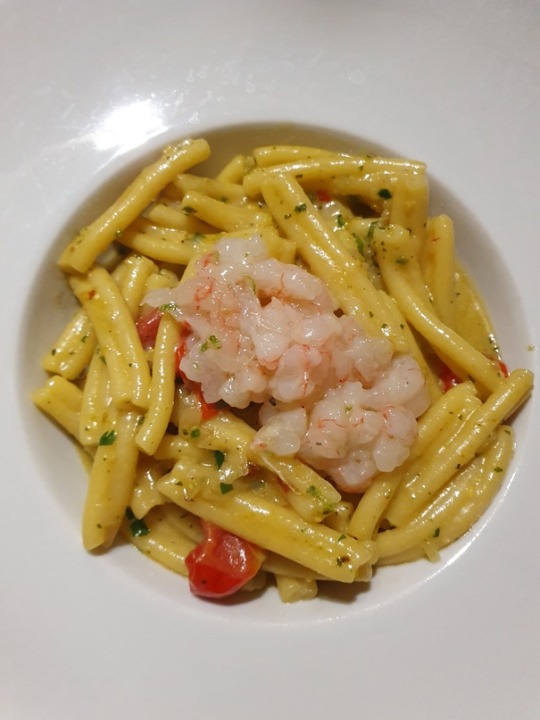

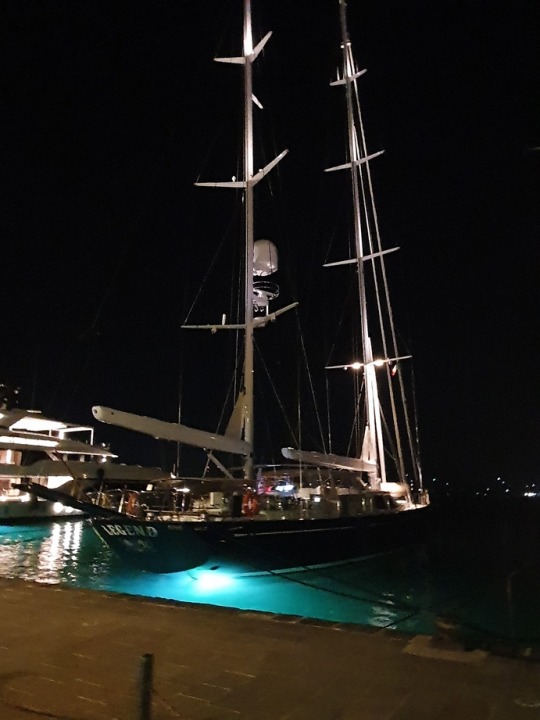
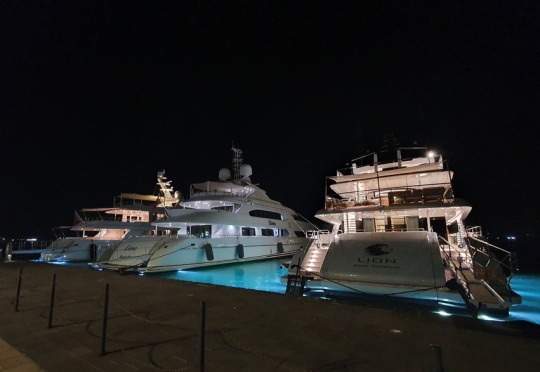

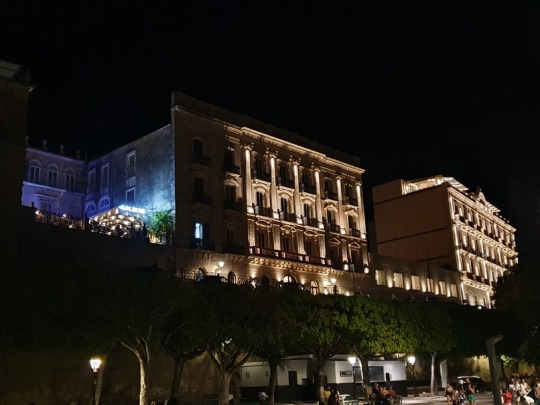
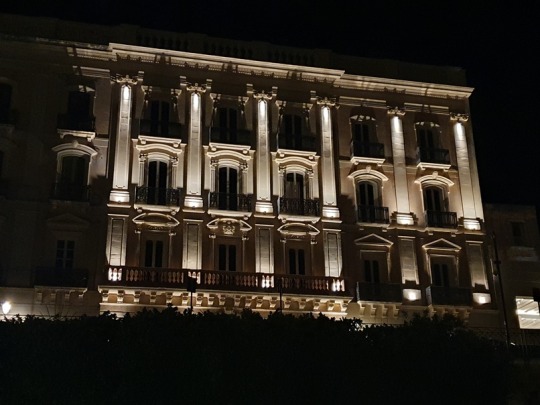
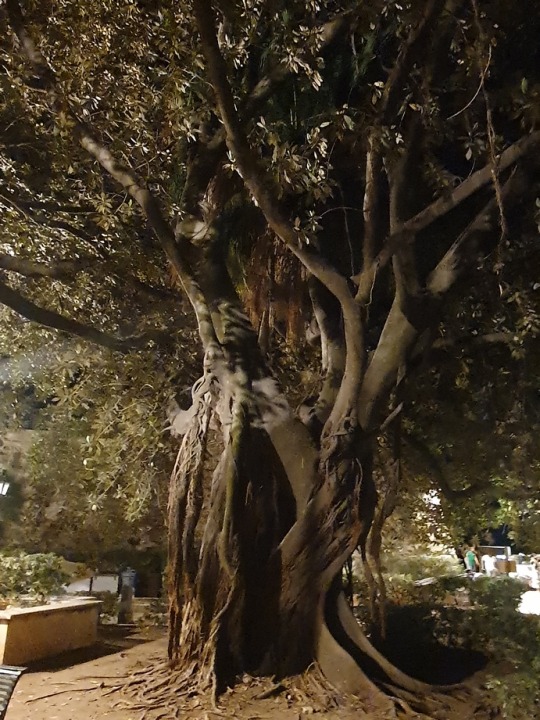

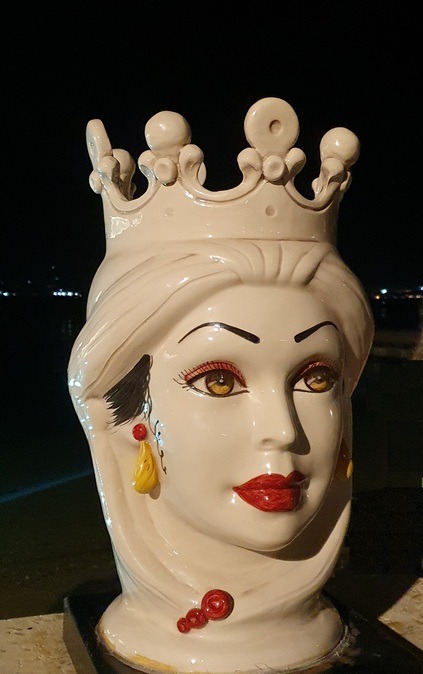
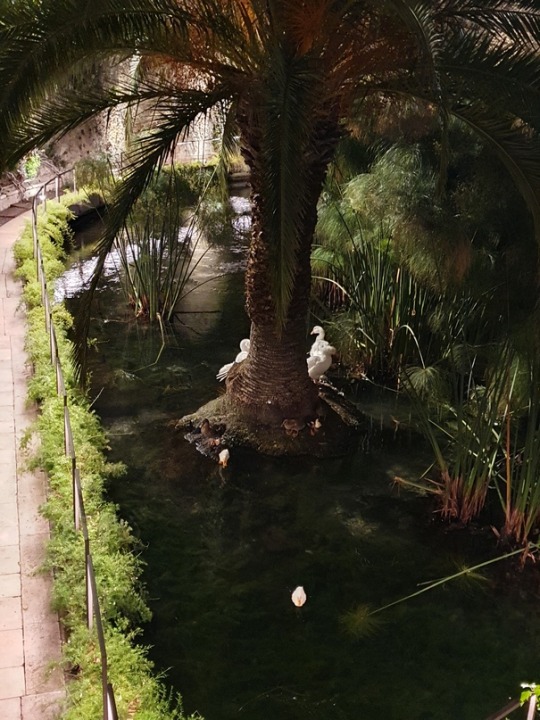
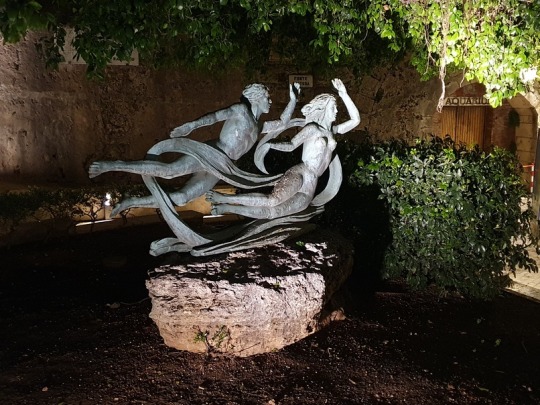
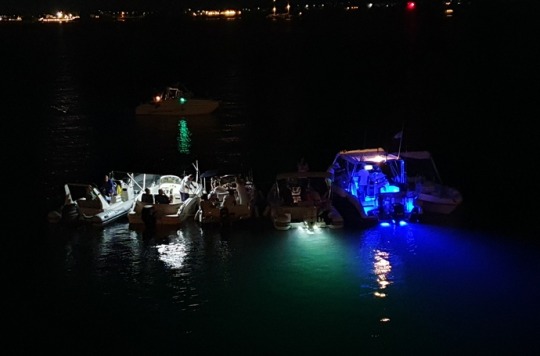


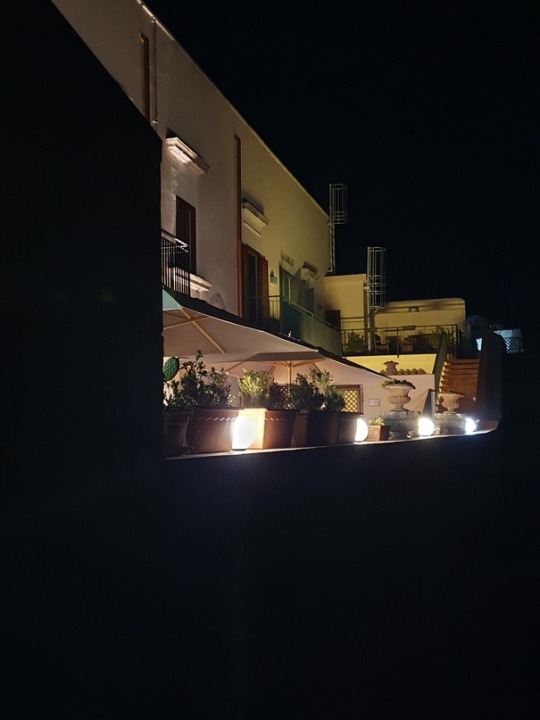

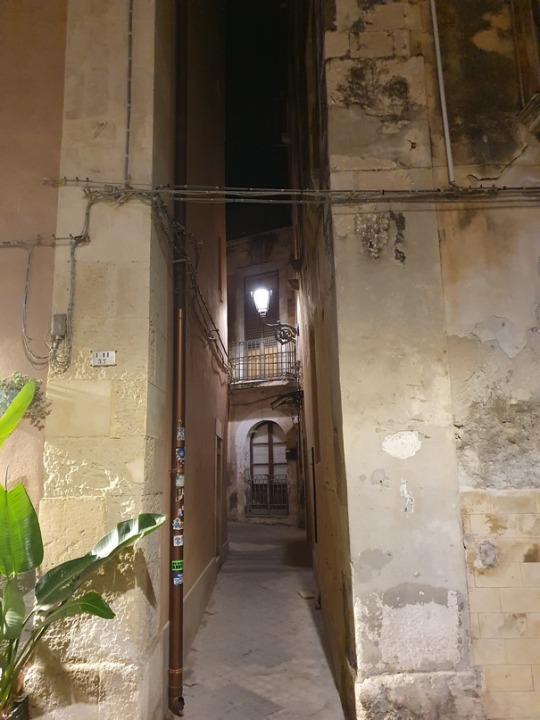
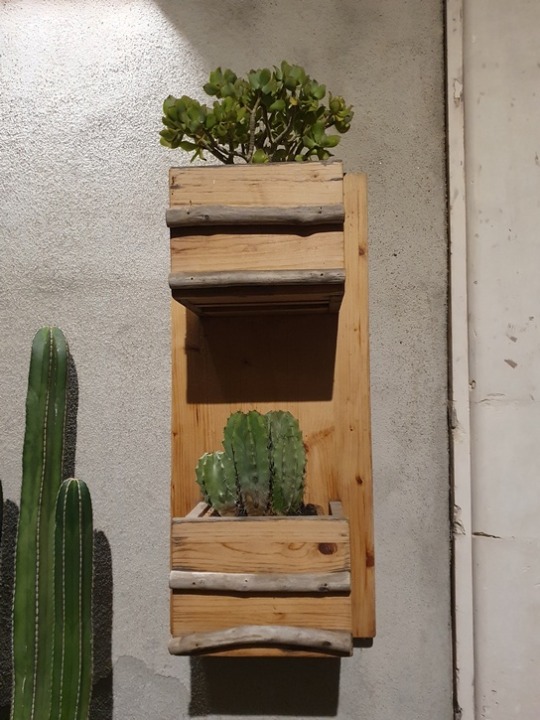
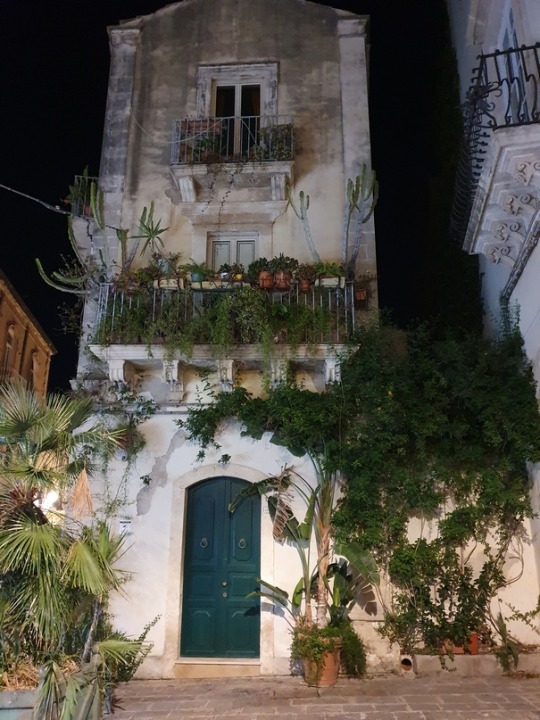
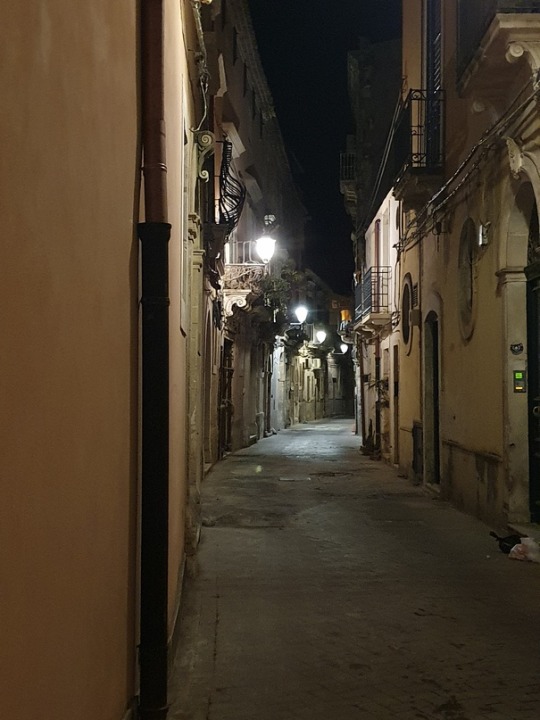
ORTIGIA DI NOTTE
Abbiamo pranzato in un vecchio ristorante di Ortigia. Fino a qualche anno fa vi erano i due fratelli che l’avevano ereditato dal padre. Eravamo in confidenza e quando ci sedevamo a tavola non ci portavano neanche il menù ma una serie di piatti con antipasti tipici di Siracusa. La pasta alla Meggellina o allo scoglio gli spaghetti al nero di Sicci, la frittura, l’arrosto, la stessa cassata con cui si finiva il pranzo, seguivano le stagioni, la disponibilità del momento. Ora il ristorante è uno dei tanti, con piatti belli a vedersi ma insapori, ed un menù che è lo stesso di Milano o Düsseldorf. Siracusa dalla tavola è scomparsa nella ricerca del Glamour, di una supposta eleganza che giustifica un costo non equilibrato con il pranzo servito. Per questo ci avventuriamo nella notte di Origia con la paura di non trovare più la sua anima accogliente ed antica. Ci accolgono i grandi Yacht dalle forme eleganti che sanno di una ricchezza che cerca ancora l’avventura tra le vele di due alberi o nei ponti eleganti di una cattedrale marina. Poi però torna Ortigia, i suoi enormi baobab la fontana di Aretusa, torna nelle feste sulle barche luminose ormeggiate ai lati delle grandi mura o in quella nei balconi luminosi delle antiche case. Ortigia vive il suo mare e vive sé stessa, di giorno e di notte, indifferente ai tanti turisti per cui l’hanno camuffata e popolata di ristoranti, vive nel silenzio che avvolge i suoi balconi, nella luce giallognola dei suoi vicoli, nelle feste dei ragazzi nelle sue oscure spiaggette, nel vento che l’attraversa e nel tempo che non la vince. Nel silenzio della notte e nei pub stracolmi, tra tavolini e barche in cui rimbomba la musica da discoteca, come un’antica signora che l’oblio non potrà mai vincere, Ortigia vive.
We had lunch in an old restaurant in Ortigia. Until a few years ago there were two brothers who had inherited it from their father. We were friend and when we sat down at the table they didn't even bring us the menu but a series of dishes with typical Syracuse appetizers. The Meggellina or scoglio pasta, black Sicci's spaghetti (cutttlefish spaghetti) with black sauce, the fried food, the roast, the same cassata with which we finished lunch, followed the seasons, the availability of the moment. Now the restaurant is one of many, with dishes that are beautiful to look at but tasteless, and a menu that is the same as in Milan or Düsseldorf. Syracuse has disappeared from the table in the search for Glamour, for a supposed elegance that justifies a cost that is not balanced with the lunch served. This is why we venture into the night of Origia with the fear of no longer finding its welcoming and ancient soul. We are welcomed by large yachts with elegant shapes that smell of a richness that still seeks adventure between the sails of two masted ship or in the elegant descks of a marine cathedral. But then Ortigia returns, its enormous baobabs, the fountain of Arethusa, returns to the celebrations on the bright boats moored at the sides of the great walls or in the bright balconies of the ancient houses. Ortigia lives its sea and lives itself, day and night, indifferent to the many tourists for whom they have disguised it and populated it with restaurants, it lives in the silence that envelops its balconies, in the yellowish light of its alleys, in the festivals of teeneger in its dark little beaches, in the wind that crosses it and in the time that does not overcome it. In the silence of the night and in busy pubs, between tables and boats in which disco music booms, like an ancient lady that oblivion can never conquer, Ortigia lives.
28 notes
·
View notes
Text
To the south! (Day 3)
The night trains to Sicily (all intercity trains to Sicily actually) go on the ferry! Which is more fun in theory than in practice (it involves a lot of manouvering and the train going back and forth for a seemingly infinite time), but still, the idea that you are on a train and then THE TRAIN gets on the ferry is just so good.
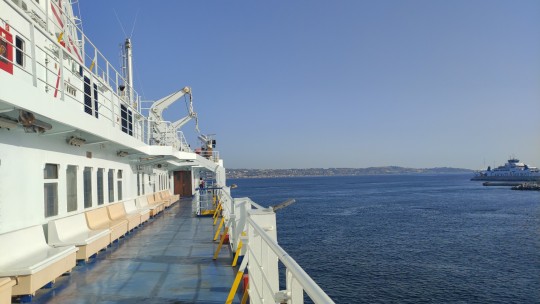
(I didn't take ANY pictures of the train on the ferry D: but well this was the ferry upstairs XD)
The train is an hour late and this leaves me with a very short time to shower, change and rest for a bit if i actually want to go to Pozzallo this afternoon. It's very, very hot but somehow it is more manageable that the heat in Viareggio and Rome (I guess lower humidity and wind?) so I decide to try to go.

The train to Pozzallo is the tiniest diesel train <3 old but luckily it has ac! (Except that something happens after the departure and the ac is not working properly and it is SO HOT. And the train is late. And I don't have enough water ;_;) Also they sadly graffited the windows, and I can't really see outside:(
A guy tried to open a window and when he saw they were locked shut he went straight into the *place where the train driver is I have no idea how you would call that in english* and got the tool to open them, then proceded to offer to open every window in the train car yay!

(open windows=pretty photos from the train)
Pozzallo is a nice seaside town, definitely better as a place to visit than Brennero (northernmost station) and Bardonecchia (westernmost). There's a nice, cool-ish breeze and in the shade is almost pleasant, but every time i step outside of the shadows the sun is scorching. I wanted to dip my toes in the water but the beach was full of people and I didn't really want to walk under the sun for so long, so I just wandered around for a bit. (I didn't even take a picture of the sea. WHAT? I usually take several pictures of the sea every time I come near the sea XD)
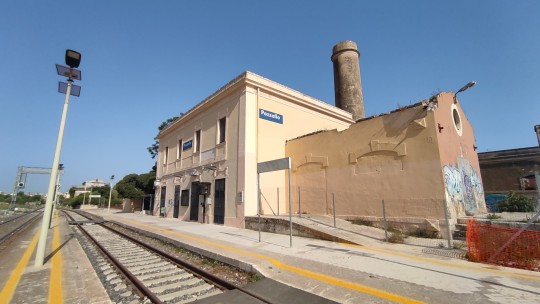
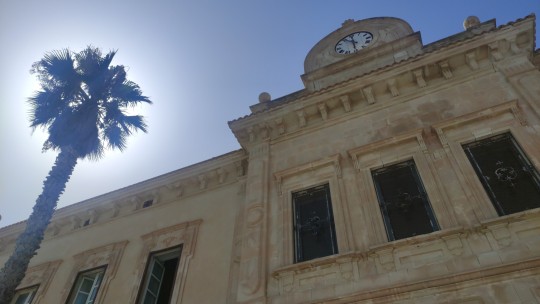
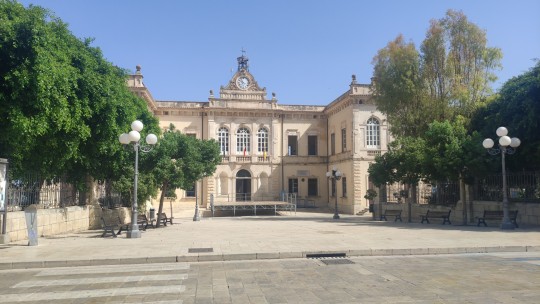
When I got to the train station, they announced that my train was cancelled for a problem on the line. The next one wouldn't come for another three hours and it was the last one, so I tried to find an alternative by bus (I even considered getting a taxi which would have been... so expensive 😅). I noticed, though, that the Trenitalia app was still tracking the train and didn't say that it was cancelled, so i decided to wait. And MENO MALE, because the train was not cancelled and so actually everything was ok XD
It's the same train from before, same problem with the ac. I have stored so much heat that really the idea of another hour and an half on a scalding fake leather seat and warm wind coming from the windows was kinda killing me. But! In Rosolini I noticed that there was a train leaving from there just ten minutes after mine, and it was a super new one! So i waited till then next station to make sure that it would actually depart, and i changed trains. I am very happy now with the big windows and the ac on :3

I took a bus (a tiny bus! I love tiny buses!) from the station to the old town of Syracuse, which is actually on a small island (isola di Ortigia) connected to the main city by two bridges. The cathedral square was stunning, and so was the view out to sea.
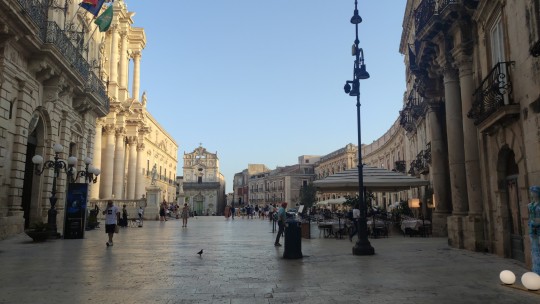

There was generally juat a very nice vibe, and I think I'd like to come back to Syracuse in the future, maybe with someone else (as usual, being alone in the south of Italy feels much lonelier than other places; everything is built on the idea that you do things with friends, family, loved ones, and if you're on your own it doesn't quite work the same.
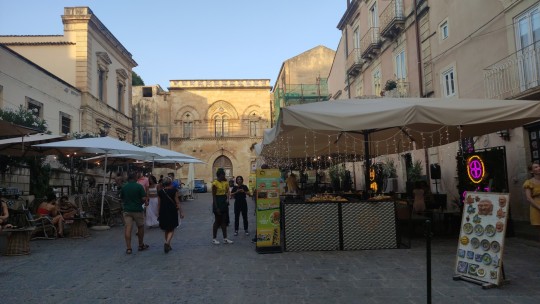
I was starving so I got a cannolo, but it was kind of the worst cannolo I ever had (hyperbolically): so sweet! The thing I usually like about cannoli is that they are not overly sweet :(
One interesting thing about Syracuse is that people's accent is not as strong as in other parts of Sicily (or at least that's the impression i got from the limited interactions i had). Of course when i overheard people speaking in their dialect I couldn't understand a word, but that's to be expected XD
After the sun set it's not as hot as it was this afternoon but it is A LOT more humid; and it's getting dark pretty rapidly; and I'm very tired. So i guess it's time to go home.
#it was still kind of a day from hell but there were very nice moments#italy#sicily#travel#mag travels from time to time#to the south!#i just want a tag for the things i personally put out into the world
12 notes
·
View notes
Text
Siracusa
Siracusa (or Syracuse) was the most important city of Magna Graecia. In 413 BC, it defeated Athens. At the height of its power, it was a city of over 300,000. Cicero called it “the greatest Greek city and the most beautiful of them all. “
He had the beautiful part right. Today we took the one hour train ride from Catania to Siracusa. It was a beautiful place to visit on a beautiful day.
There are two distinct parts of the city. Ortygia is a small island, connected by bridges, which is the heart of the old city. The archeological park is in the northern part of the city. We visited both and neither disappointed.
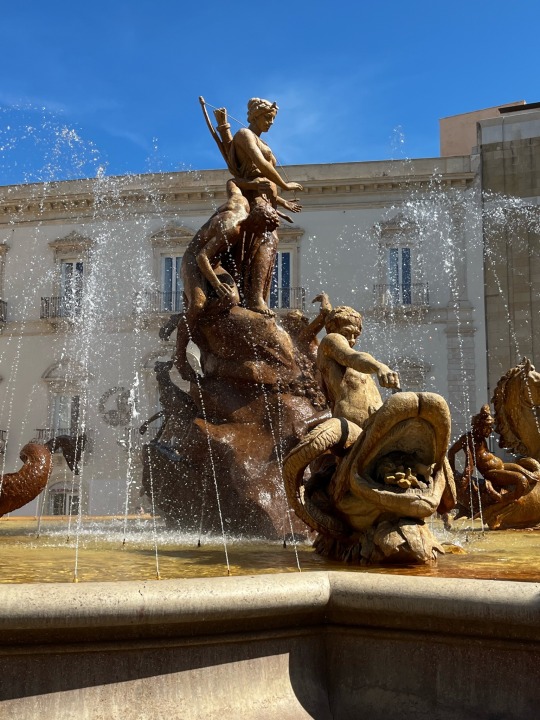
The Fountain of Diana

The Cathedral, which is now my favorite site in all of Italy and about which I will write a separate post.
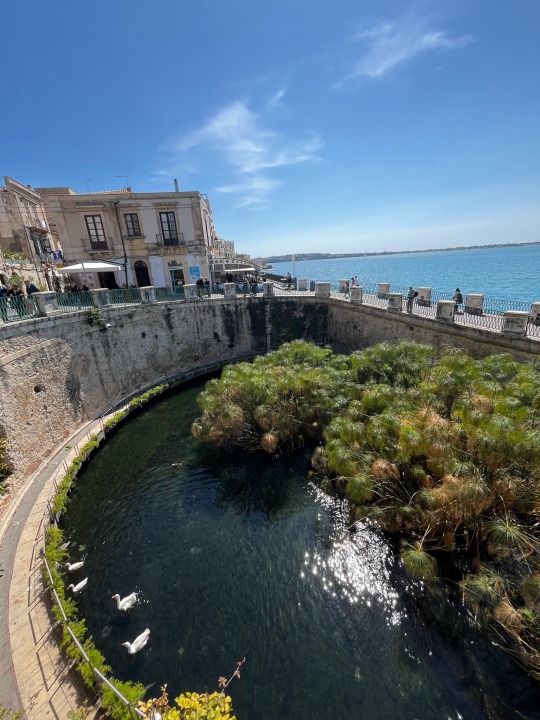
The Fountain of Aretusa, which is really interesting. It is a natural, fresh water spring, right beside the salty Mediterranean.

One of many cute streets.
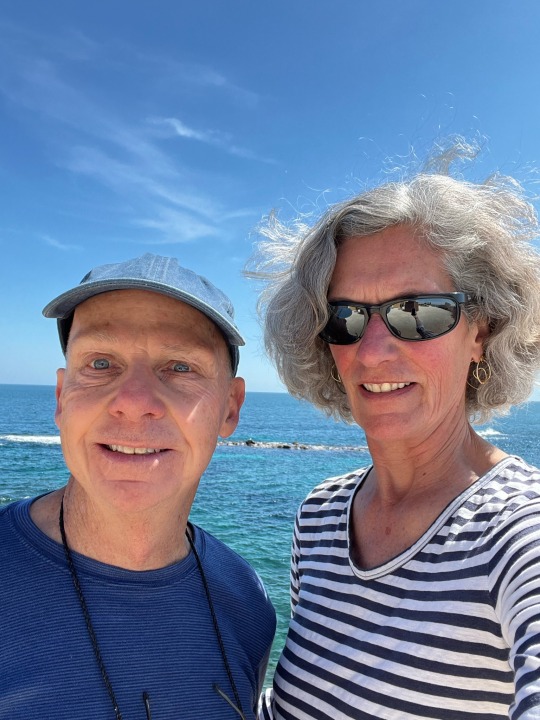
The waterfront.
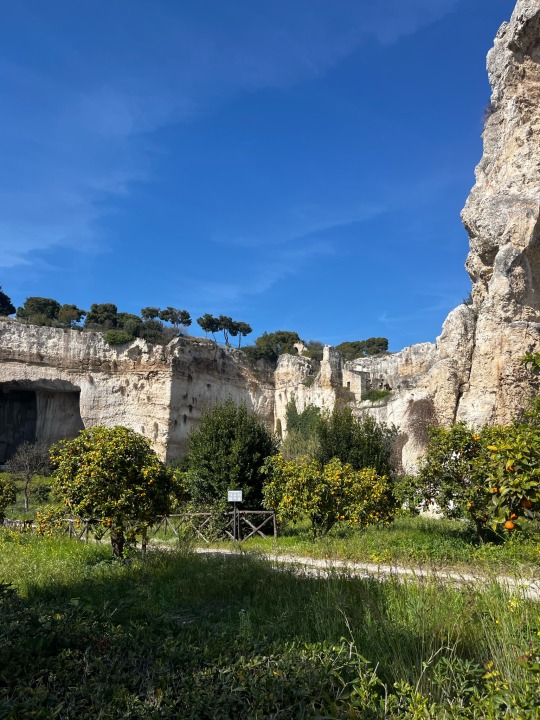
Now the archeological park. These are the latomie, or stone quarries. Huge building blocks were cut out of these cliffs. The center is now a citrus grove but was an ancient prison…prisoners were the workforce. Access to this local stone was Siracusa’s superpower!
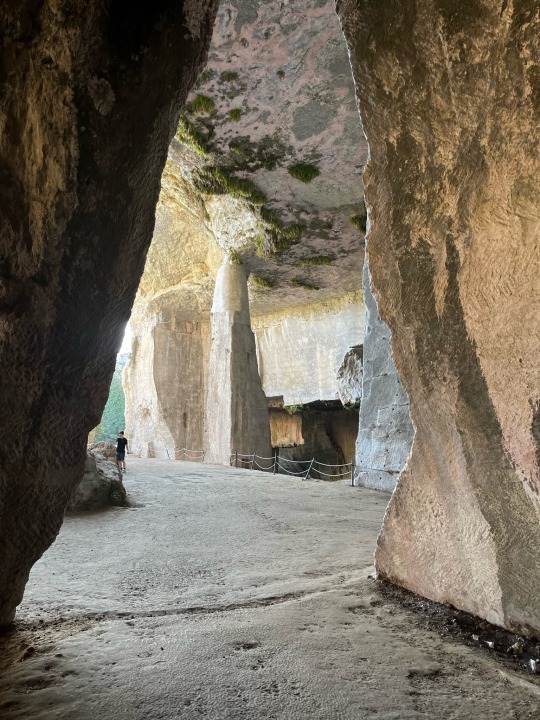
As the stones were removed, huge caves were created. In today’s park, sculptures decorate the walkways and caves. This colossus….
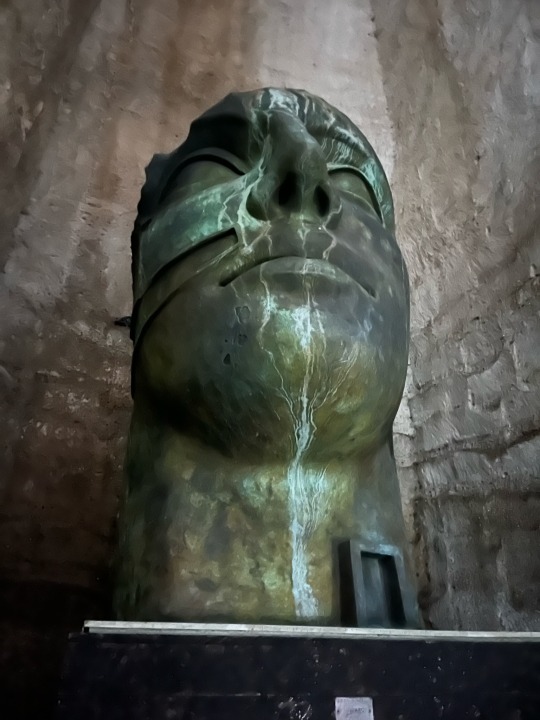
…was in the deepest cave in total darkness. Everyone had their phone flashlights lit! But my phone had no trouble capturing the image in the dark. iPhones are amazing…and so was the colossus!

The Greek theatre is still used today. It has survived because the seats were cut out of the cliff so could not be carried away and reused.

The Roman Amphitheater is less well preserved but still worth a visit. The contests against wild animals ended but the theatre continued to be used for other games until about 400AD
4 notes
·
View notes
Text
The radical Catholic priest, Daniel Berrigan, after traveling to North Vietnam with a peace delegation during the war, visited the hospital room of Ronald Brazee. Brazee was a high school student who had drenched himself with kerosene and immolated himself outside the Cathedral of the Immaculate Conception in downtown Syracuse, New York to protest the war. “He was still living a month later,” Berrigan writes. “I was able to gain access to him. I smelled the odor of burning flesh and I understood anew what I had seen in North Vietnam. The boy was dying in torment, his body like a great piece of meat cast upon a grill. He died shortly thereafter. I felt that my senses had been invaded in a new way. I had understood the power of death in the modern world. I knew I must speak and act against death because this boy’s death was being multiplied a thousandfold in the Land of Burning Children. So I went to Catonsville because I had gone to Hanoi.” In Catonsville, Maryland Berrigan and eight other activists, known as the Catonsville Nine, broke into a draft board on May 17, 1968. They took 378 draft files and burned them with homemade napalm in the parking lot. Berrigan was sentenced to three years in a federal prison.
Chris Hedges, ‘Aaron Bushnell’s Divine Violence’
3 notes
·
View notes
Text
Pompeii and Amalfi Coast Private Tour by Car from Rome
Pompeii and Amalfi Coast Private Tour by Car from Rome
For Skyscanner, the various 20 maximum beautiful towns in Italy, there are two towns at the Amalfi Coast
In a Skyscanner article, among the 20 most stunning Italian coastal cities, there's Campania area with 2 towns at the Amalfi Coast.
Skyscanner experts have diagnosed as many as 20 beach towns among the Italian islands, the Tyrrhenian and Adriatic coasts, asserting them many of the most beautiful in Italy for the astonishing promenades, their open sea squares, and the maritime traditions.
Genoa, the brilliant metropolis that overlooks the Gulf of the Ligurian Sea has received the primary area on this ranking, characterized via its ever-pulsating historical center, the aquarium, the Lanterna and the ocean Museum (the renovated Galata.)
sooner or later the localities of Vernazza, within the Cinque Terre, had been placed in order, with its sceneries characterized with the aid of vineyards and terraced olive groves, then Tuscany with its wild seashores and the trendy sailor’s villages in the Monte Argentario of Porto Ercole and Porto Santo Stefano.
within the Monti Aurunci, there's Sperlonga which is located in 4th region with its village with a timeless surroundings, characterised by way of very white homes and award-winning beaches bathed by way of crystal clean waters.
The town of Cagliari inside the fifth area is favored for the blue sea and the limestone rocks, but additionally for the noisy markets and the tall medieval towers.
So the Campania vicinity unearths the 6th, seventh and 8th location with the metropolis of Naples and the Amalfi Coast with Positano and Amalfi. Naples is a town that may be preferred at any time of the yr. In its historical middle in addition to being capable of admire lovely museums and churches you can find conventional sweets and the high-quality pizzerias within the global and manifestly a prom with extremely good beaches.
not far from Naples, only 50 km away is the Amalfi Coast which has Positano on the 7th vicinity. Its batter-coloured houses appear to be a cascade of colors in shades of lapis lazuli. right here is the route of the gods has grow to be very famous for travelers who like to do tracking, way to the breathtaking landscape provided by way of the rock overlooking the ocean or take a walk through the narrow streets of sandal shops, artwork galleries and the beautiful majolica ( artistic ceramics).
a little in addition south there is Amalfi, with its history it affirms itself as a cultural center of the coast thanks to the superb beyond of a powerful Maritime Republic. Do now not leave out a forestall within the Piazza del Duomo, to visit the Cathedral of Sant’Andrea and to taste one of the nearby candies, which includes the Sfogliatella Santa Rosa or the lemon pleasure.
In Campania place, in 9th vicinity, Palinuro additionally stands proud for its very white beaches, crystal clear sea and mysterious caves positioned alongside the coast. A need to for travelers who reach this area is the stroll through the streets of the middle and the visit of the picturesque Baia del Buon Dormire.
In Basilicata, there's Maratea which follows in 10th area as the sole metropolis in the place that overlooks the Tyrrhenian Sea. it is the city dominated through the well-known statue of Christ the Redeemer and is one of the maximum famous locations for seaside tourism. within the “Pearl of the Tyrrhenian”, there are seashores of super beauty and its depths are perfect for fans of scuba diving.
the other lovely Italian cities that follow from the eleventh to the 20th role are Tropea in Calabria; Palermo Sicilian capital; Syracuse connected via two bridges, that is in reality an island connected to the mainland; Otranto in Salento with its narrow streets and its white built-up area overlooking the blue; Bari with its amazing promenade; Vieste with the countrywide Park, the unmistakable Faro and the Pizzomunno monolith; Termoli with its enforcing Swabian fortress which symbolizes the vintage town with the Norman tower in limestone; Vasto and its well-known Punta Aderci Nature Reserve.
The rating ends with Venice crossed by its essential canal, the principle artery for town connections, the Rialto bridge, the squares opened on the sea Trieste and San Marco, castles, slender and fascinating canals, beaches and regattas with sailboats dragged with the aid of sea breezes
0 notes
Text

Cathedral Of The Immaculate Conception in Syracuse, New York.
0 notes
Text
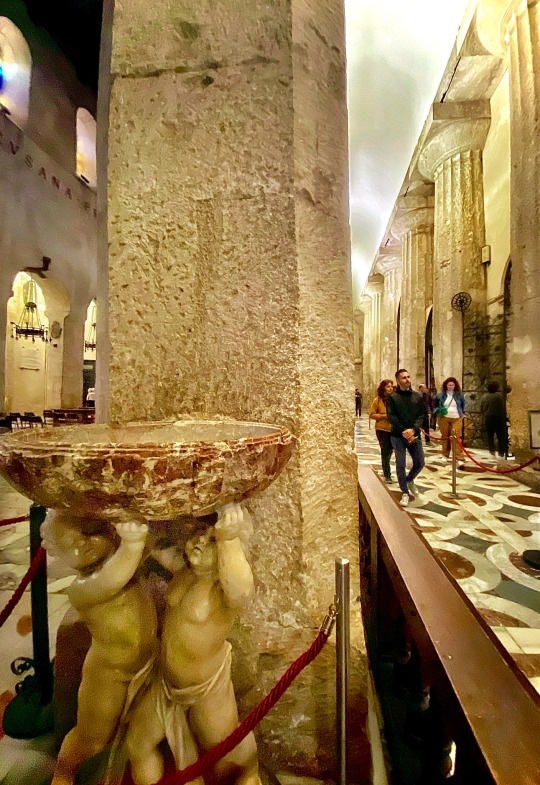

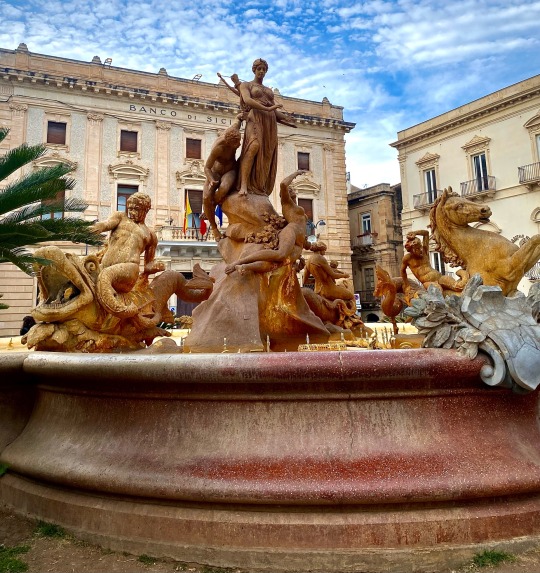
01 May 2023 Ortigia, Sicily:
The Cathedral of Syracuse (Duomo di Siracusa), formally the Cattedrale metropolitana della Natività di Maria Santissima, is an ancient Catholic church in Syracuse, Sicily, the seat of the Catholic Archdiocese of Siracusa. Its structure is originally a Greek doric temple, and for this reason it is included in a UNESCO World Heritage Site designated in 2005.
#photography#beautiful#photooftheday#mood#travel#italy#traveling#my photo#sicilia#sicily#italytravel
1 note
·
View note
Text

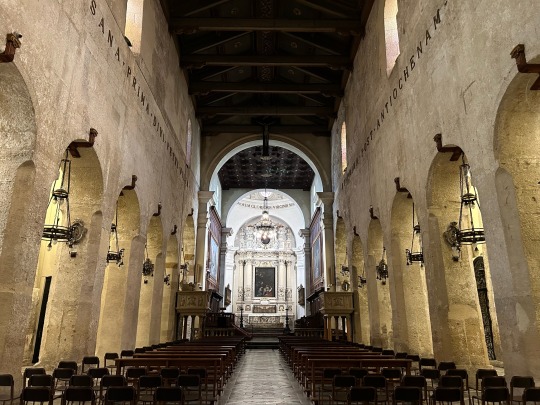
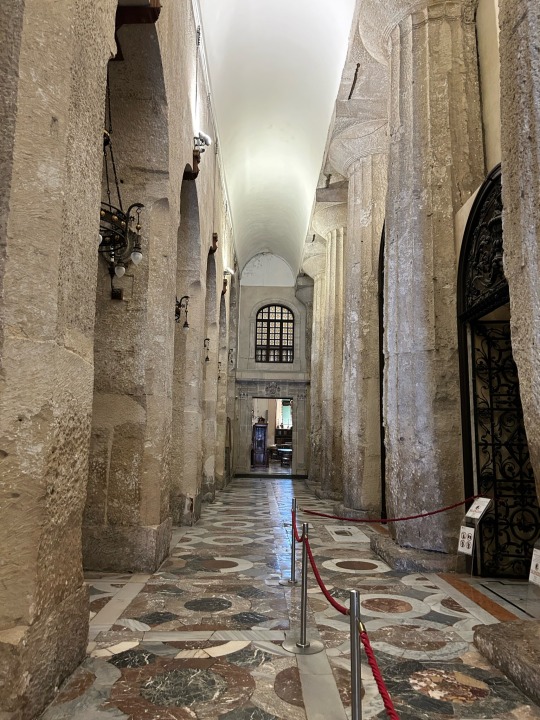
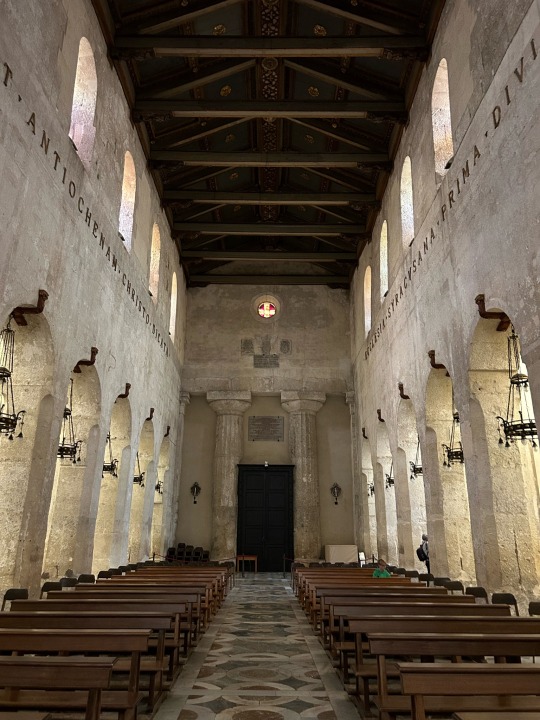
The cathedral of Syracuse was originally constructed back in the 6th century BCE as an Ancient Greek temple to Athena. About 1,000 years later, it was turned into a church. Walls were built around the original giant columns and arches were put in on what was once solid walls.
Feb 23, 2024
#italia#italy#Syracuse#Siracusa#Sicily#Sicilia#photography#original photography#church#church architecture#architecture#travel#lensblr#photographers on tumblr#historical architecture#Ancient Greece#ancient architecture#iphonography#wanderingjana
54 notes
·
View notes
Text
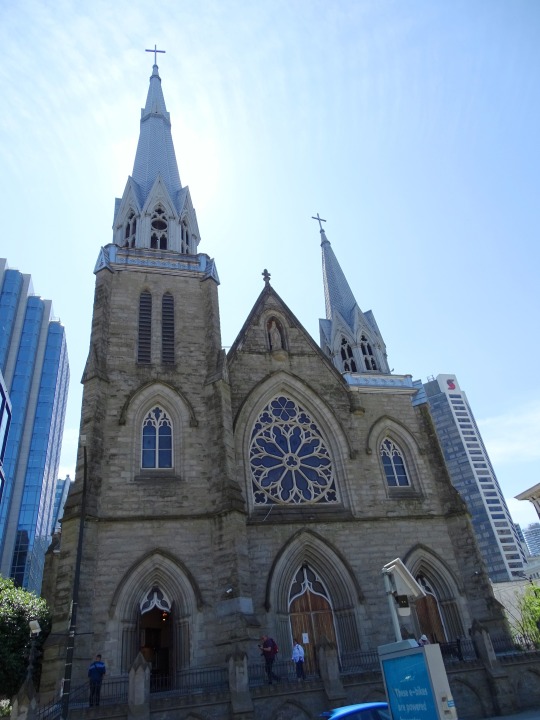
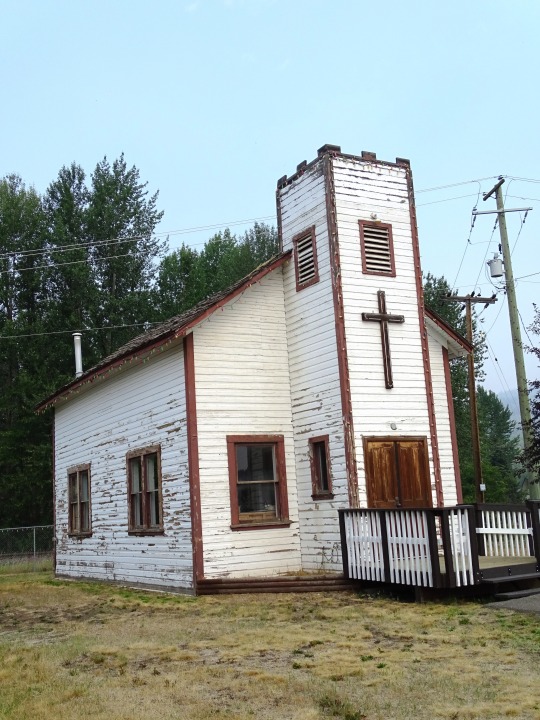
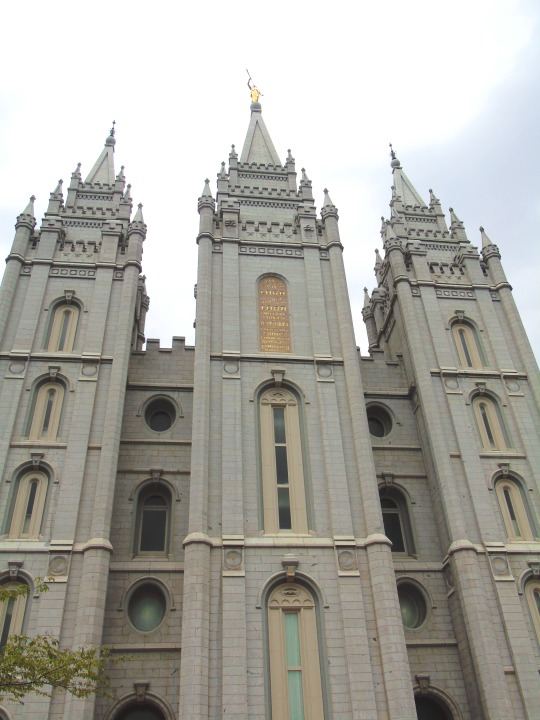
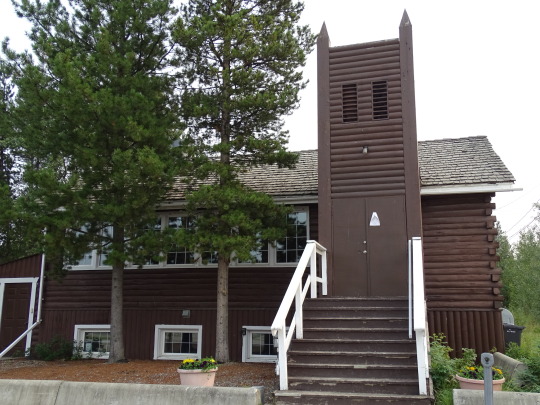
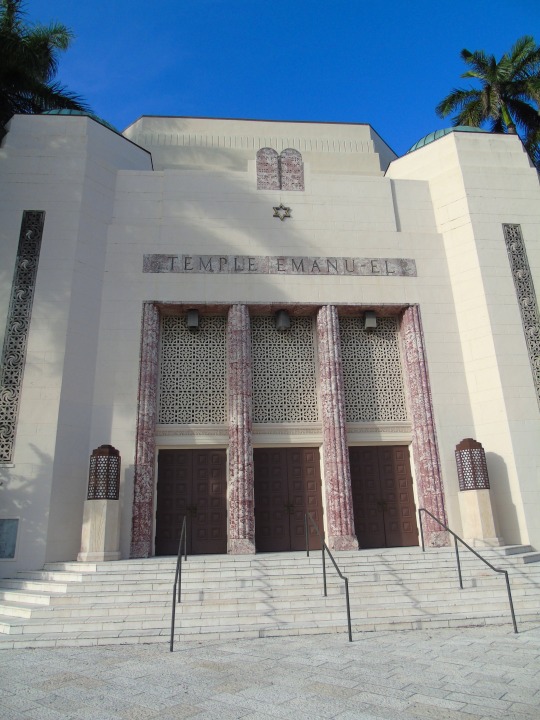
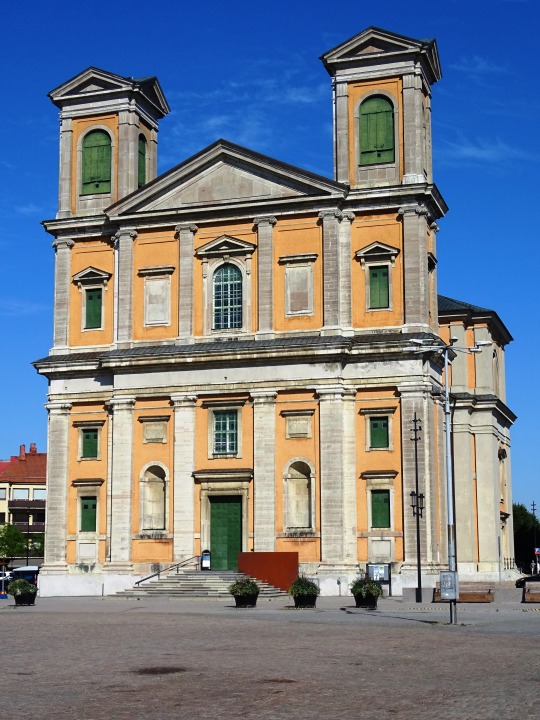
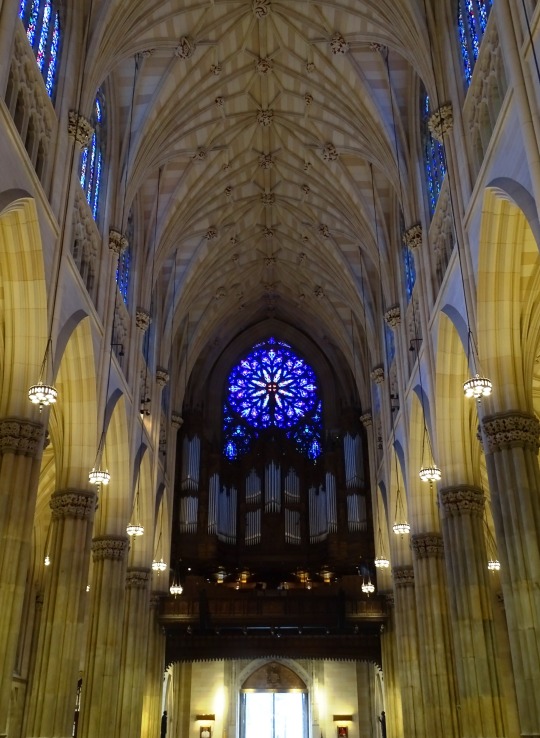
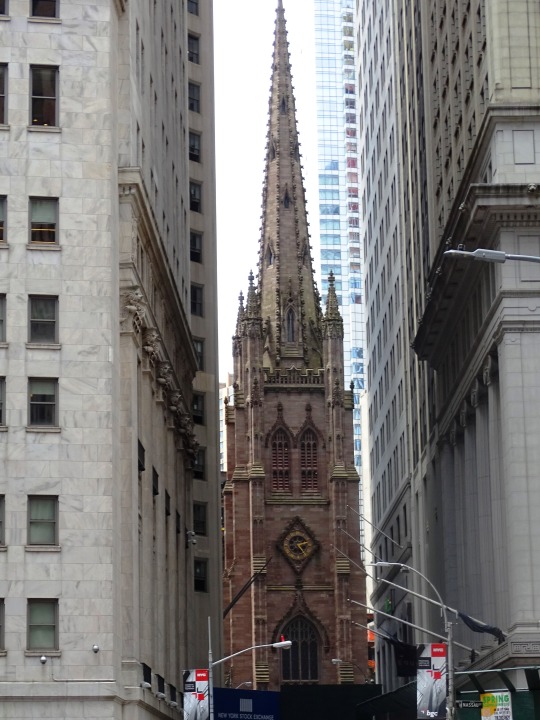
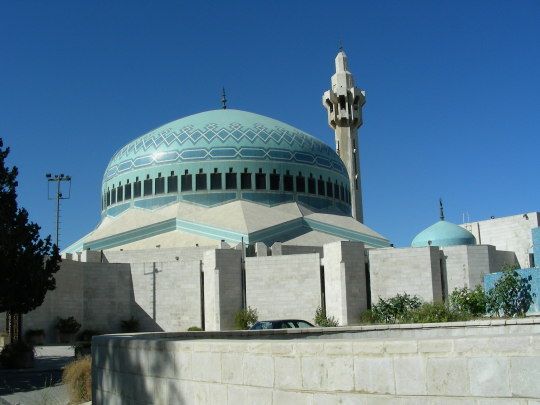
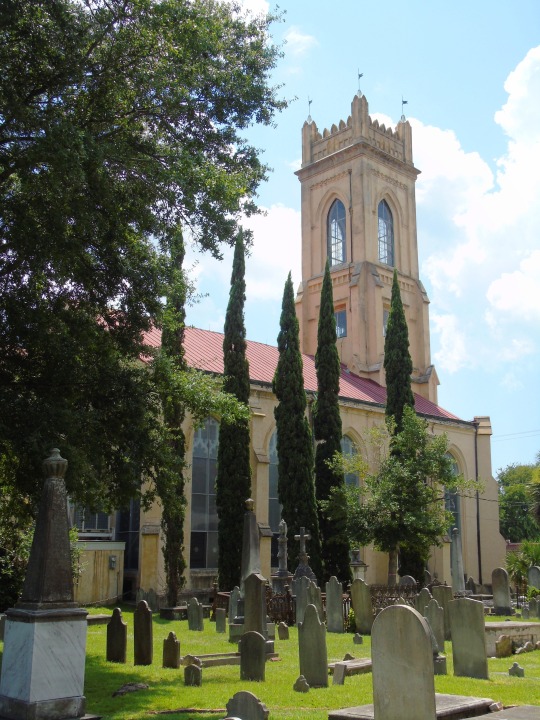
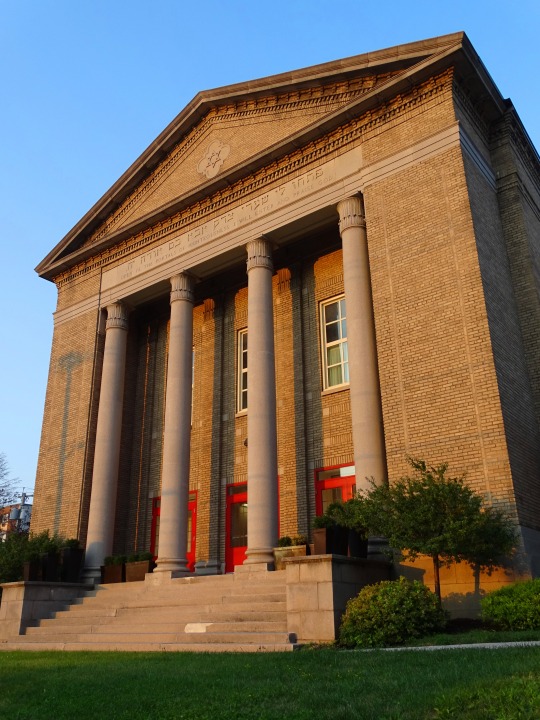
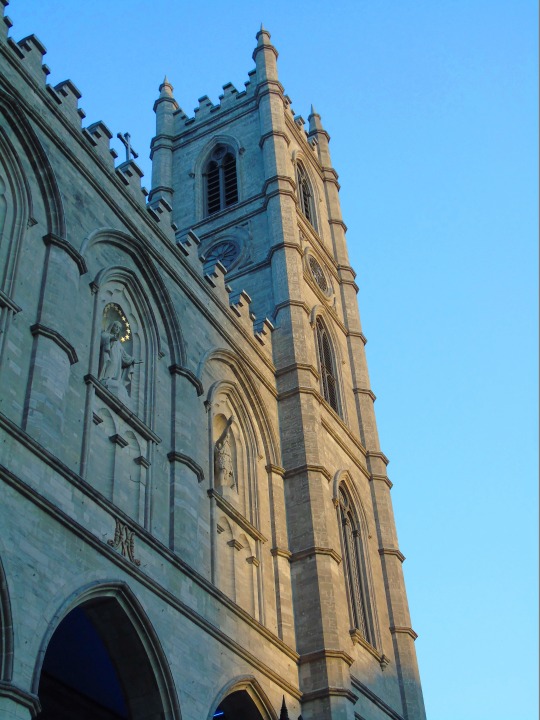
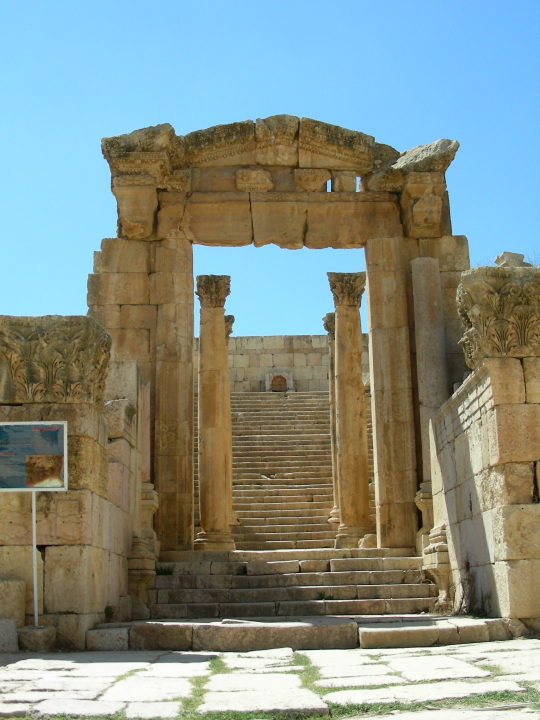
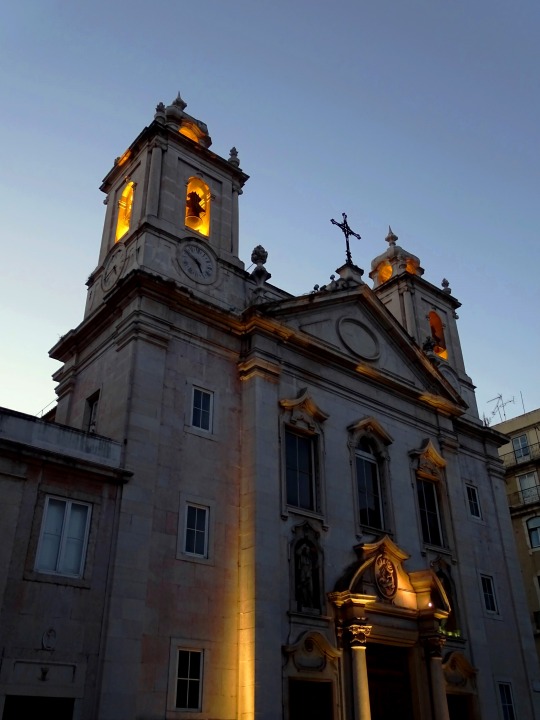
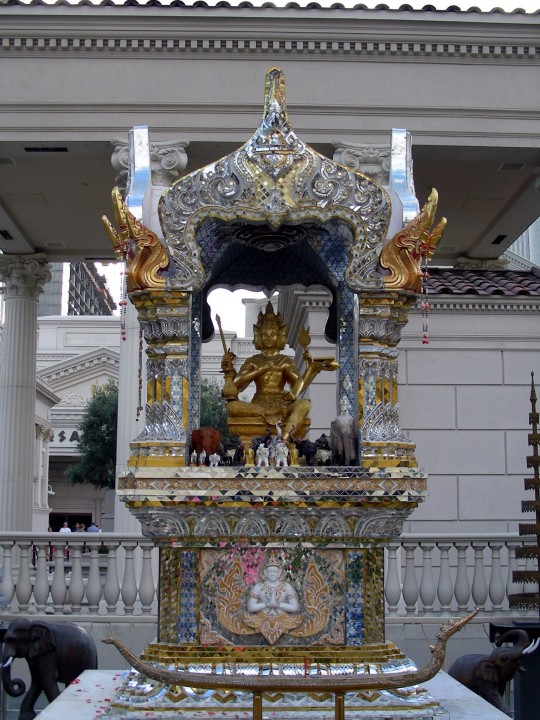
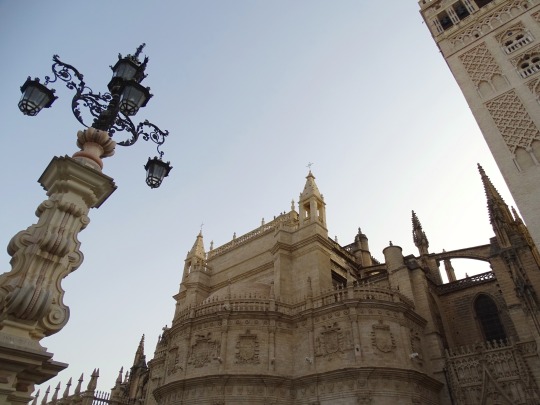
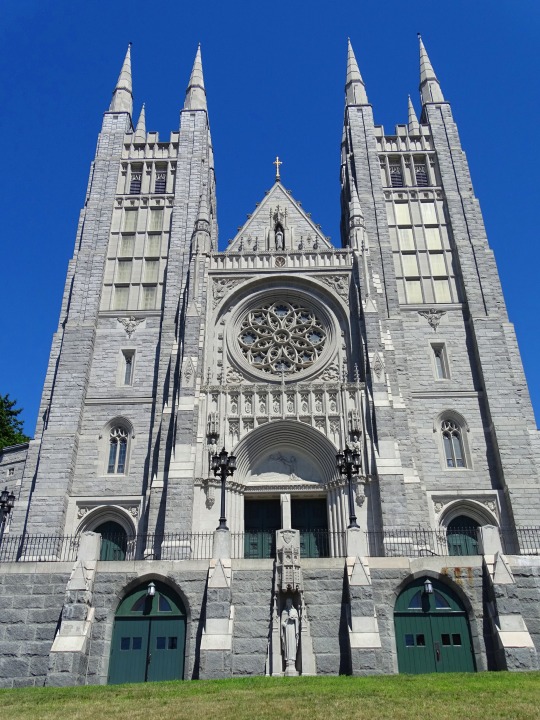
World Religion Day
World Religion Day is celebrated on the third Sunday in January every year, and is a reminder of the need for harmony and understanding between religions and faith systems. On this day, communities of different faiths have the opportunity to get together and listen to each other, as well as celebrate the differences and commonalities that the delicate intermingling of culture and religion brings. There are approximately 4,200 religions around the world. While many people live their lives without religion, faith in a higher being or power works for the majority of people. Whatever the reasons, we are all for the idea of people being unified despite differences, and celebrating them.
History of World Religion Day
The first official observance of World Religion Day (as it is known today), was in 1950, but the concept began a few years prior to that. In Portland, Maine, the National Spiritual Assembly of the Bahá’í Faith hosted a talk in Eastland Park Hotel in October 1947, culminating in the decision to observe an annual event, then known as World Peace Through World Religion. By 1949, the event began to be observed in other parts of the U.S. and grew more popular. By 1950, it came to be known as World Religion Day. On this day, at various different locations, many authors, educators, and philosophers are invited to speak on world religions and the importance of establishing and maintaining harmony between them. It’s a great forum for learning more about other religions and cultures too, and a chance to intermingle socially with people of different faiths and worldviews.
Since this concept was the brainchild of people from the Bahá’í Faith, it is worth exploring what this faith is and tracing its historical roots. As a religion, Bahá’í first emerged in Persia (modern-day Iran), in the 1800s. There are three core principles of this faith — unity of God, unity of religion, and unity of all mankind. It is a monotheistic faith, believing in a single god, and that the spiritual aspects of all religions in this world stem from this single god. Another central tenet is the belief in the innate equality of all human beings. Thus, all humans have the same rights and responsibilities. If you look at it, the Bahá’í Faith is an all-encompassing one that recognizes the commonalities between all religions, so Baháʼí believes that all faiths have common spiritual goals too, especially since religions are ever-evolving.
World Religion Day timeline
1800s The Baha`i Faith is Established
In Persia, around 1844, the Bahá'í Faith is established by a mix of people from Christian, Jewish, and Zoroastrian religious roots.
1949 World Peace Through World Religion
The first event takes place in Portland, Maine, to establish the foundation of World Religion Day.
1950 World Religion Day is First Observed
As World Peace Through World Religion begins to spread across the U.S., the celebration morphs into World Religion Day.
1957 Bahá'í Leadership Passes on to a Group
Rather than passing on from individual to individual, the death of Shoghi Effendi leads to the faith leadership passing to the Universal House of Justice.
World Religion Day FAQs
How many religions are there in the world?
Many scholars estimate that there are approximately 4,200 different active religions in the world today.
How many countries celebrate World Religion Day?
World Religion Day is currently celebrated in over 80 countries around the globe.
Which religion has the most adherents?
Christianity tops the list, with a whopping 2,3 billion. Next comes Islam with 1,8 billion. Third on the list are those unaffiliated with any particular religion, at 1,2 billion.
How to Observe World Religion Day
Attend an interfaith event
Engage with other religions
Try out a different religious experience
Many different organizations hold interfaith events on this day, where people can get together and hear about the beliefs and philosophies held by others of different faiths. These events are great spaces for eminent speakers, writers, and spiritual leaders to share openly about what they subscribe to, and why.
World Religion Day provides the perfect opportunity for people to step out of their individual bubbles and engage with the beliefs and spiritual ideologies of others. It’s about dialogue and the freedom to both express and listen; most importantly, it’s a time to learn from each other. This day reminds us that religion does not have to be a taboo subject, and everyone has a unique story to tell.
Religion is often inextricably linked with culture, so why not experience the best of both by attending a religious event of some sort, outside of your own? Whether it is going to a mosque or temple, or celebrating a religious festival you are not familiar with, it’s a great way to make inroads into different community groups and build relationships.
5 Facts About World Religions You May Not Know
You name it, there’s a patron saint for it
Wicca is not an ancient religion
Mormons have limited beverage options
The “Qur’an” mentions Jesus more than Muhammad
Hindus can also be atheists
In Catholicism, there is a patron saint for nearly everything, including coffee, beekeepers, and headaches.
Though it sounds like it would be ancient, considering its roots in European fertility cults, Wicca was introduced in the 1950s.
Mormons are forbidden from drinking beverages like tea, coffee, or alcohol; soda, however, seems to be okay.
Though this is not a popularity contest, the “Qur’an” apparently mentions Jesus Christ five times more than Muhammad.
While Hinduism is a polytheistic religion, it is also possible to be a practicing Hindu and an atheist — the moral and ethical code remains the same.
Why World Religion Day is Important
It purports to unite people
Interfaith harmony
A chance to experience something different
We love any day that seeks to bring people together, irrespective of differences, and this day fits the bill exactly. Whatever one’s religious beliefs and culture, the longing for acceptance and unity will be a fundamentally human one that unites us already.
World Religion Day offers people across the globe a chance to get to know others of different religions better, and seeks to foster a better understanding of religious differences through peaceful means such as dialogue.
The various interfaith and religious events organized by communities around the world are an exciting opportunity and opening for people to immerse themselves in spiritual experiences different from what they know. And so much of it is cultural that we see it as a win-win.
Source
#Historic Anglican Church of St. Clement#Cathedral of Our Lady of the Holy Rosary#Seville Cathedral#Salt Lake Temple#Spain#Salt Lake City#Sweden#USA#Fredrikskyrkan Church#Karlskrona#original photography#architecture#cityscape#tourist attraction#landmark#Temple Emanu-El#Miami Beach#Temple Adath Yeshurun#Saint George Tropoforos Hellenic Orthodox Church#Syracuse#New York City#St. Patrick's Cathedral#Notre-Dame Basilica of Montréal#Amman#World Religion Day#21 January 2024#third Sunday in January#Basilica of Saints Peter and Paul
1 note
·
View note
Text
The historic circumstances surrounding the death of St. Carnelianus still remain a mystery, with primary sources being rather scant. However, there is one relevant oral tradition preserved in Sicily to this day.
According to that, a Trinity Sunday sermon preached by him (some of its contents actually survive in De Pulchritudine Universi) inspired three servants of his house to improvise a setting of the Venite with three contrasting yet harmonising lines -- thus inventing what might have been the first-ever example of polyphony. From the home of the bishop, the practice spread to the whole church, and beyond; the governor of Syracuse, Gaius Tourmalinus, and the "learned ones" of the city, quickly caught wind of the phenomenon, and were deeply offended by this new style of music, which gave them a perfect "intellectual" excuse to move against the Church and accuse them of "corrupting the morals of the people" -- historians have theorised that the reasoning behind this could have been a perception of "sensuality" in the quality of polyphonic music, as both the governor and his intellectuals were die-hard Stoics, and considered the polyphonic/harmonic elements of the new music as a deviation from virtuous simplicity.
The persecution soon became more pronounced and official, and the originators of the polyphonic chant were identified and condemned to death -- both for this reason plus a couple of made-up charges for good measure. Carnelianus, however, did not hesitate for a moment, and after having defended his servants fervently during their trial, persuaded Tourmalinus to take his own life in return for the freedom of the three servants and for an end to the persecution of his flock. The reported last words of St. Carnelianus were thus: "O Lord who didst form the ear, open thou the ears of the heathens to the glory of Thy truth!"; and according to the tradition, the high priestess Iole of the temple of Athena, at the sound of these words, confessed Christ as Lord before the assembly, and jumped into the funeral pyre, perishing together with the bishop.
Another legend claims that, if all the surviving relics of St. Carnelianus are brought back to the cathedral of Syracuse, its organ will never cipher nor go out of tune.
This morning I was in a lecture on archaeological surveying, and one of things mentioned was the theodolite, a device for measuring angles. Well, I think "theodolite" sounds like the name of a Church Father. So here's my off-the-top-of-my-head biography.
St. Theodolite of Cyprus was a 3rd-century Church Father, known by two works - the Discourse with Eurythrus, a debate with a pagan philosopher on the plausibility of reincarnation, and the Epistle to Martial, a letter to an apostate who had returned to the faith. His feast day is on the 22nd January.
18 notes
·
View notes
Text
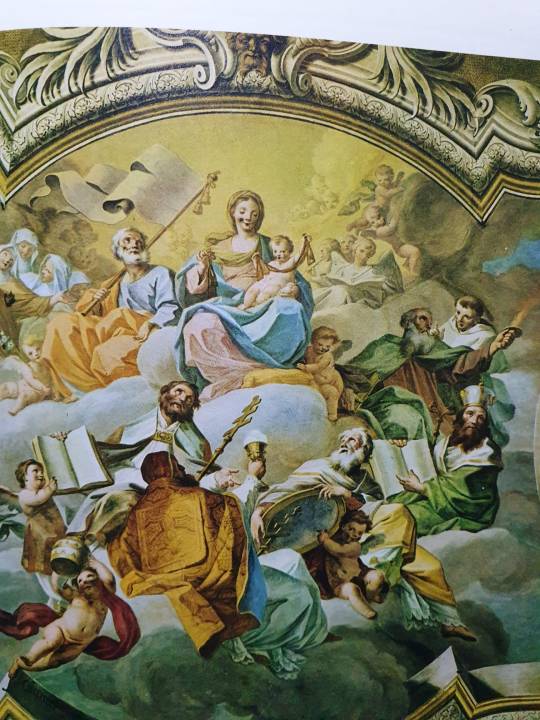
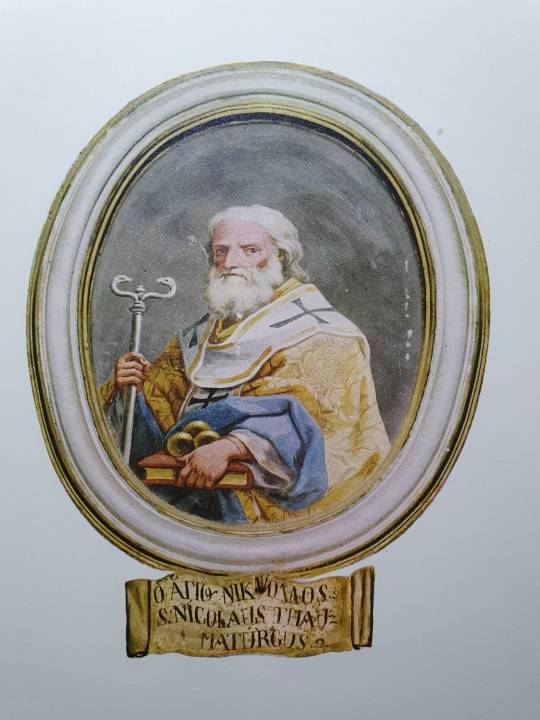
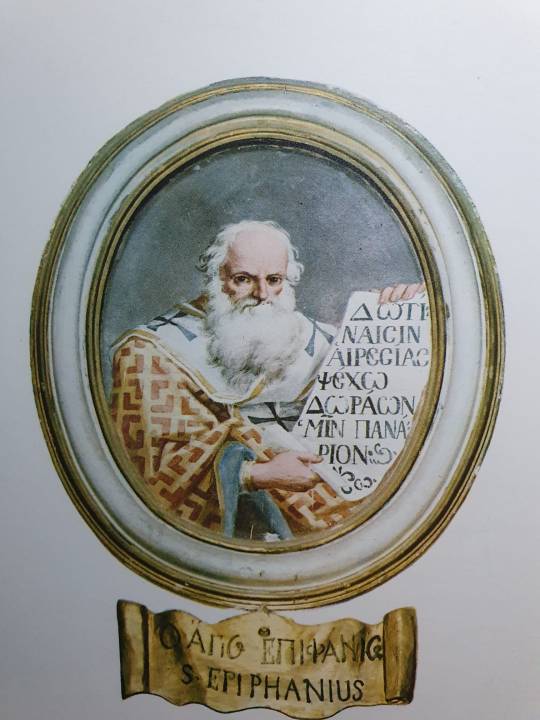
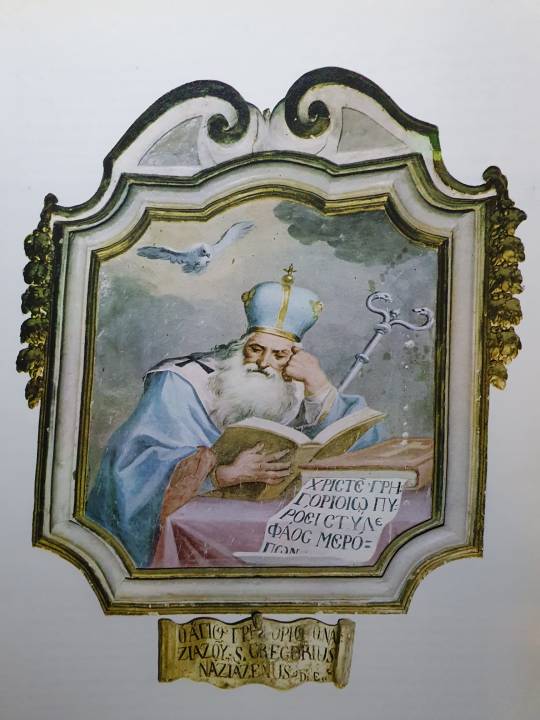
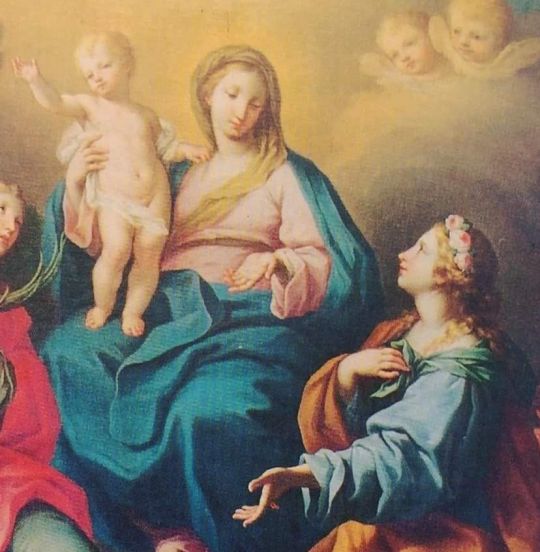



Affreschi di Olivio Sozzi (Catania 1690-Ispica 1765). Poco prima del grande terremoto che distrusse tutta la Sicilia orientale, nasce Olivio Sozzi, uno dei pittori siciliani più grandi del suo tempo (1690-1765). Siamo in un periodo che non possiamo definire felice per l’isola che tra peste, terremoti e guerre vede le città spopolarsi o ridursi a cumuli di macerie. Eppure è un momento di grande fermento, di innovazione con l’introduzione del barocco e di rinnovamento con città ricostruite secondo dettami illuministici. Tra gli autori di questo disperato (perché nasce dalla distruzione) rinnovamento (perché ricrea e svecchia) c’è Olivio Sozzi. Come molti grandi siciliani l’artista cresce innestando sul talento e l’abilità artistica siciliani il respiro europeo formandosi a Roma. Dalla grande e classica città che stava anch’essa risorgendo nel Barocco, Sozzi acquisisce le forme, il gusto, il respiro universale. Tornato in Sicilia e uno dei motori della primavera artistica che nell’isola ripara i danni del triste inverno che aveva cancellato secoli di arte e di vicende storiche. La sua attività si svolge nelle città più ricche di allora, Palermo, Catania, Messina e nelle loro province spaziando dagli affreschi presso le iconiche chiese ortodosse della provincia Palermitana, fino alle rinascenti grandi chiese e cattedrali del siracusano e del catanese. Sozzi non ha l’aerea gioiosa bellezza del Borremans, con le sue leggiadre sante di bell’aspetto e i suoi cieli infiniti, è più formale, più iconico e tradizionale. Ma le sue madonne hanno l’eleganza e la perfezione dei classici, esaltano la luminosa concezione che il bello sovrasta ogni imperfezione ed orrore che la vita o la natura potrebbero darci.
Frescoes by Olivio Sozzi (Catania 1690-Ispica 1765). Shortly before the great earthquake that destroyed all of eastern Sicily, Olivio Sozzi was born, one of the greatest Sicilian painters of his time (1690-1765). We are in a period that we cannot define as happy for the island which, between plague, earthquakes and wars, sees the cities depopulated or reduced to piles of rubble. Yet it is a time of great turmoil, of innovation with the introduction of the Baroque and of renewal with cities rebuilt according to the dictates of the Enlightenment. Among the authors of this desperate (because it arises from destruction) renewal (because it recreates and rejuvenates) is Olivio Sozzi. Like many great Sicilians, the artist grew up by grafting the European flavor onto Sicilian talent and artistic ability, training in Rome. From the great and classical city which was also resurrecting in the Baroque, Sozzi acquired the forms, the taste, the universal breath. Having returned to Sicily, he is one of the driving forces of the artistic spring that repairs the damage of the sad winter on the island which had erased centuries of art and historical events. His activity took place in the richest cities of the time, Palermo, Catania, Messina and in their provinces, ranging from frescoes in the iconic Orthodox churches of the Palermo province, to the resurgent large churches and cathedrals of Syracuse and Catania. Sozzi does not have the airy joyful beauty of Borremans, with his graceful good-looking saints and his infinite skies, he is more formal, more iconic and traditional. But his madonnas have the elegance and perfection of the classics, they enhance the luminous concept that beauty surpasses every imperfection and horror that life or nature could give us.
12 notes
·
View notes
Text
To the south! (Day 4)
I slept in and woke up almost too late but luckily I made it to the station with enough time to buy a coffee and croissant to go (I don't think I xould have survived without the coffee XD I have various snacks in my backpack but NO COFFEE because i forgot to bring my emergency bag of instant coffee XD)
I wanted to stop somewhere between Syracuse and Messina but the heat is still intense and there's less wind then yesterday, and apparently Messina is a little cooler than the other places, so I guess I'm visiting Messina today? XD
Catania from the train looks amazing, i definitely need to come visit it at some point.
I don't know if it's the low visibility or if I'm on the wrong side, but Mount Etna is not as impressive as I thought it would be. (I'm sorry but I'm team Vesuvius forever, every time I see that beautiful giant I can't take my eyes off of it)

Both the temperature AND the humidity are actually lower in Messina! And there's a cool breeze that makes it kind of pleasant (though the sun is still scorching and this only works in the shade). There are trams! I'm going to ride the trams :D
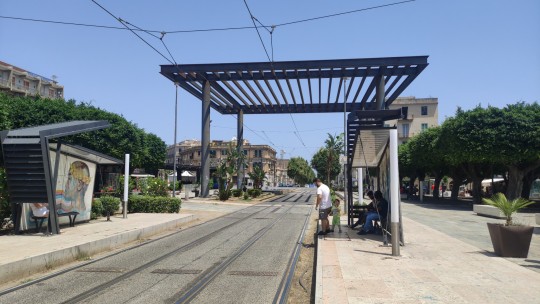
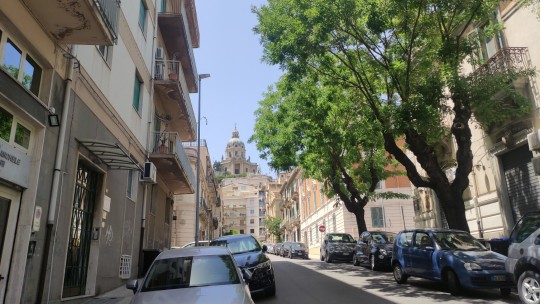
I made a couple of tactical mistakes in the beginning (mainly by believing that the pleasant weather would last through the afternoon and that the trams would have air conditioning), and I ended up dragging myself around the old town fearing a full on heat stroke. I did find the cathedral though, and it was very beautiful!
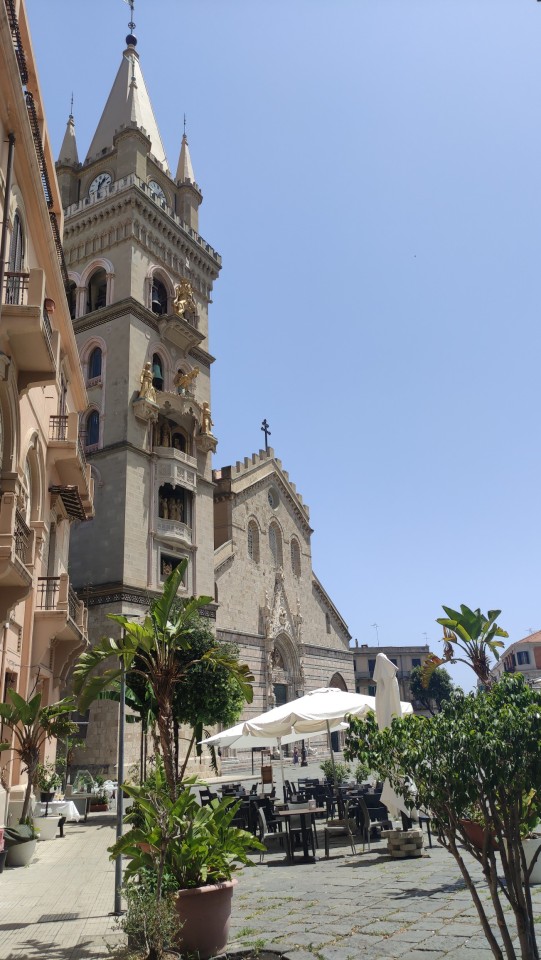
(Also, I didn't get a heat stroke, so there's that.)
I decided to go get the ferry to Calabria earlier, though I was a little sad that I didn't eat at least one arancino, but! They had them at the ferry's cafe, and it was THE BEST arancino i ever had (not hyperbolic, it was really that good), with ragu made with not minced but cubed meat and a lot of rosemary, truly delicious.
I thought there was gonna be a bus stop near the ferry but there isn't? Actually there might not be buses in Villa San Giovanni (is it really possible or is technology failing me?)
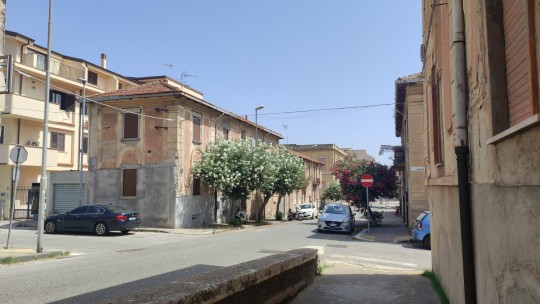
Also... There's really not much to see in Villa San Giovanni. I have a moment of heat+tiredness fueled crisis (it's still more than 3 hours before my night train leaves), but then I decide to make use of my train pass and just go to Reggio Calabria and back on the new and air conditioned train XD
Feeling definitely better, with still a couple of hours to fill, I went to the supermarket... Only i couldn't find the entrance D: I only found two car ramps but I wasn't gonna go down those and also I wasn't even sure the supermarket existed anymore XD also for some reason in the same building where the supermarket and other shops were there was the entrance of a high school? A truly baffling experience.
While I was waiting at the station I managed to snatch a picture of the the train getting off the ferry :D
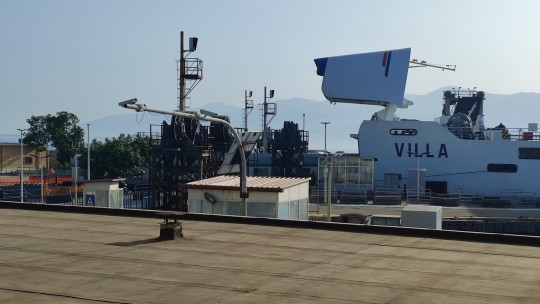
For a pure stroke of luck when booking thia trip i found that the excelsior compartment costed less than the normal sleeper compartment so tonight I'm travelling in luxury, with my own private bathroom AND SHOWER.
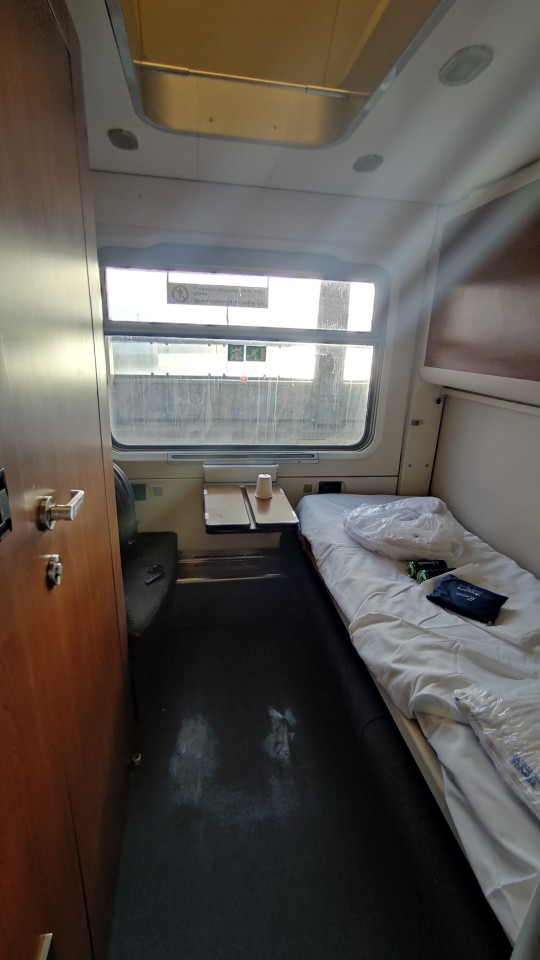
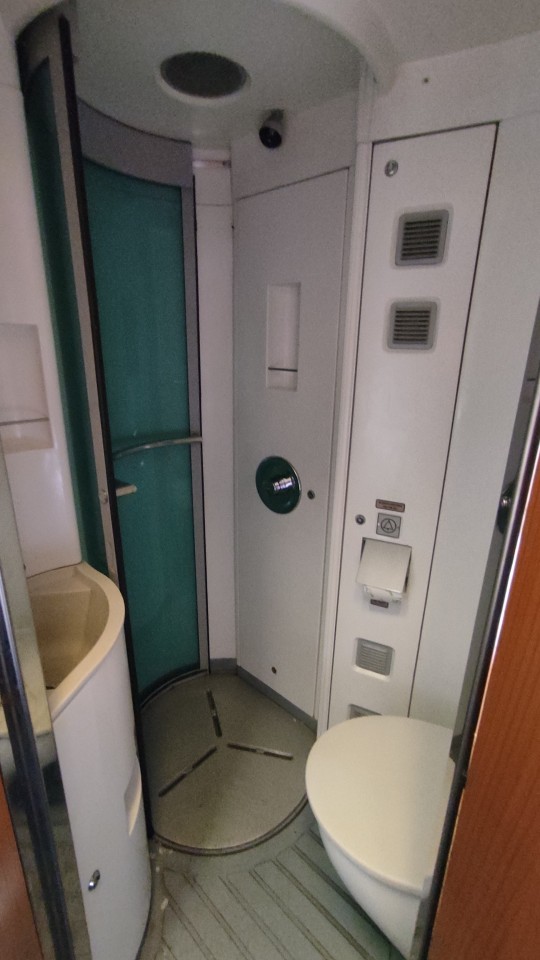
Also my window is toward the sea <3

The coast of Calabria is truly the most magnificent, one of my favourite parts of Italy to go through by train.
And one of the perks of having your own compartment is that you can turn off the light and enjoy the twilight.
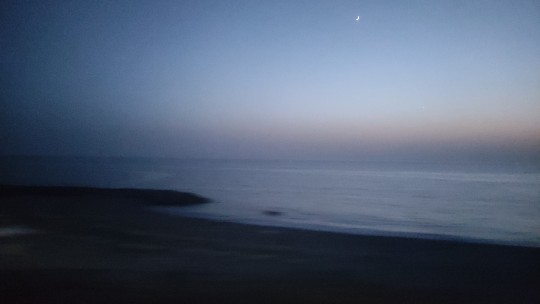
#italy#travel#mag travels from time to time#to the south!#i just want a tag for the things i personally put out into the world
8 notes
·
View notes
Photo
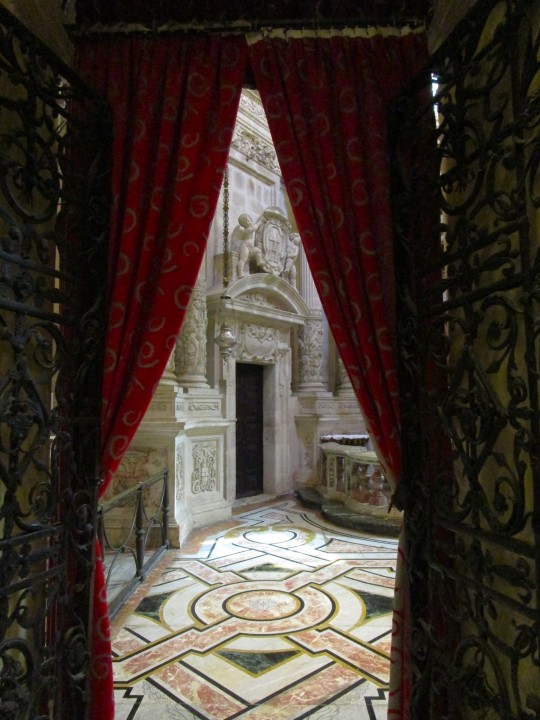
Duomo di Siracusa, Sicilia
Photo by Charles Reeza
#Cathedral of Syracuse#Sicily#Italy#richly decorated#marble floor#doorway#drapery#wrought iron gate#stone carving#architecture
12 notes
·
View notes